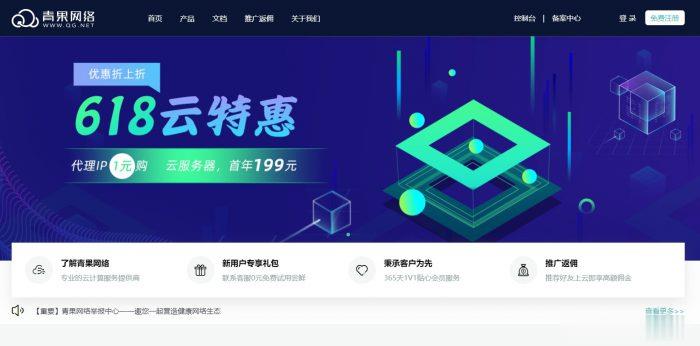C:\Users\CAROLANM\AppData\Local\Microsoft\Windows\Temporary
temporaryinternetfiles 时间:2021-04-25 阅读:()
InternetFiles\Content.
Outlook\NRXMQ6DI\FRDTS2015-739_FINALclinpharmbiosimilarguidance_111616_forRPMS.
docxClinicalPharmacologyDatatoSupportaDemonstrationofBiosimilaritytoaReferenceProductGuidanceforIndustryU.
S.
DepartmentofHealthandHumanServicesFoodandDrugAdministrationCenterforDrugEvaluationandResearch(CDER)CenterforBiologicsEvaluationandResearch(CBER)December2016BiosimilarsClinicalPharmacologyDatatoSupportaDemonstrationofBiosimilaritytoaReferenceProductGuidanceforIndustryAdditionalcopiesareavailablefrom:OfficeofCommunications,DivisionofDrugInformationCenterforDrugEvaluationandResearchFoodandDrugAdministration10001NewHampshireAve.
,HillandaleBldg.
,4thFloorSilverSpring,MD20993-0002Phone:855-543-3784or301-796-3400;Fax:301-431-6353;Email:druginfo@fda.
hhs.
govhttp://www.
fda.
gov/Drugs/GuidanceComplianceRegulatoryInformation/Guidances/default.
htmand/orOfficeofCommunication,Outreach,andDevelopmentCenterforBiologicsEvaluationandResearchFoodandDrugAdministration10903NewHampshireAve.
,Bldg.
71,rm.
3128SilverSpring,MD20993-0002Phone:800-835-4709or240-402-8010;Email:ocod@fda.
hhs.
govhttp://www.
fda.
gov/BiologicsBloodVaccines/GuidanceComplianceRegulatoryInformation/Guidances/default.
htmU.
S.
DepartmentofHealthandHumanServicesFoodandDrugAdministrationCenterforDrugEvaluationandResearch(CDER)CenterforBiologicsEvaluationandResearch(CBER)December2016BiosimilarsTABLEOFCONTENTSI.
INTRODUCTION.
1II.
THEROLEOFCLINICALPHARMACOLOGYSTUDIESINTHEDEMONSTRATIONOFBIOSIMILARITY.
2III.
CRITICALCONSIDERATIONSINTHEUSEOFCLINICALPHARMACOLOGYSTUDIESTOSUPPORTBIOSIMILARITY.
3A.
ExposureandResponseAssessmenttoSupportaDemonstrationofBiosimilarity3B.
EvaluationofResidualUncertainty4C.
AnalyticalQualityandSimilarity.
4D.
IntegrityoftheBioanalyticalMethodsUsedinPKandPDStudies.
6E.
SafetyandImmunogenicity8IV.
DEVELOPINGCLINICALPHARMACOLOGYDATAFORSUPPORTINGADEMONSTRATIONOFBIOSIMILARITY.
9A.
StudyDesign.
9B.
ReferenceProduct.
10C.
StudyPopulation.
10D.
DoseSelection.
11E.
RouteofAdministration.
11F.
PharmacokineticMeasures.
12G.
PharmacodynamicMeasures.
12H.
DefiningtheAppropriatePharmacodynamicTimeProfile.
13I.
StatisticalComparisonofPKandPDResults.
13V.
UTILITYOFSIMULATIONTOOLSINSTUDYDESIGNANDDATAANALYSIS14VI.
CONCLUSION14DEFINITIONS.
15ContainsNonbindingRecommendations1ClinicalPharmacologyDatatoSupportaDemonstrationofBiosimilaritytoaReferenceProductGuidanceforIndustry1ThisguidancerepresentsthecurrentthinkingoftheFoodandDrugAdministration(FDAorAgency)onthistopic.
ItdoesnotestablishanyrightsforanypersonandisnotbindingonFDAorthepublic.
Youcanuseanalternativeapproachifitsatisfiestherequirementsoftheapplicablestatutesandregulations.
Todiscussanalternativeapproach,contacttheFDAofficeresponsibleforthisguidanceaslistedonthetitlepage.
I.
INTRODUCTIONThisguidanceisintendedtoassistsponsorswiththedesignanduseofclinicalpharmacologystudiestosupportadecisionthataproposedtherapeuticbiologicalproductisbiosimilar2toitsreferenceproduct.
Thisguidancepertainstothoseproducts—suchastherapeuticbiologicalproducts—forwhichpharmacokinetic(PK)andpharmacodynamic(PD)dataareneededtosupportademonstrationofbiosimilarity.
Specifically,theguidancediscussessomeoftheoverarchingconceptsrelatedtoclinicalpharmacologytestingforbiosimilarproducts,approachesfordevelopingtheappropriateclinicalpharmacologydatabase,andtheutilityofmodelingandsimulationfordesigningclinicaltrials.
ThisguidanceisoneinaseriesthatFDAisdevelopingtoimplementtheBiologicsPriceCompetitionandInnovationActof2009(BPCIAct).
3Thisguidanceisintendedtoassistsponsorsindesigningclinicalpharmacologystudiesthatcansupportanapplicationsubmittedundersection351(k)ofthePublicHealthServiceAct(PHSAct)(42U.
S.
C.
262(k))(a351(k)application)aspartofastepwiseapproachtosupportademonstrationofbiosimilarity.
4Ingeneral,FDA'sguidancedocumentsdonotestablishlegallyenforceableresponsibilities.
Instead,guidancesdescribetheAgency'scurrentthinkingonatopicandshouldbeviewedonlyasrecommendations,unlessspecificregulatoryorstatutoryrequirementsarecited.
Theuseof1ThisguidancehasbeenpreparedbytheCenterforDrugEvaluationandResearch(CDER)andtheCenterforBiologicsEvaluationandResearch(CBER)attheFoodandDrugAdministration.
2Termsthatappearinboldtypearedefinedinthe"Definitions"sectionattheendofthisguidance.
3Sections7001through7003ofthePatientProtectionandAffordableCareAct(AffordableCareAct),PublicLaw111-148.
4SeeFDA'sguidanceforindustryScientificConsiderationsinDemonstratingBiosimilaritytoaReferenceProduct.
Weupdateguidancesperiodically.
Tomakesureyouhavethemostrecentversionofaguidance,checktheFDADrugsguidanceWebpageathttp://www.
fda.
gov/Drugs/GuidanceComplianceRegulatoryInformation/Guidances/default.
htm.
ContainsNonbindingRecommendations2thewordshouldinAgencyguidancesmeansthatsomethingissuggestedorrecommended,butnotrequired.
II.
THEROLEOFCLINICALPHARMACOLOGYSTUDIESINTHEDEMONSTRATIONOFBIOSIMILARITYTheBPCIAct,whichwasenactedaspartoftheAffordableCareAct,establishedanabbreviatedpathwayforFDAlicensureofbiologicalproductsthataredemonstratedtobebiosimilartoorinterchangeablewithanFDA-licensedreferenceproduct.
Thispathwayisdescribedinsection351(k)ofthePHSAct.
Undersection351(k)(2)ofthePHSAct,a351(k)applicationmustcontain,amongotherthings,informationdemonstratingthatthebiologicalproductisbiosimilartoareferenceproductbasedondataderivedfromanalyticalstudies,animalstudies,andaclinicalstudyorclinicalstudies,includinganassessmentofimmunogenicity,PK,andPD,5unlessFDAdetermines,initsdiscretion,thatcertainstudiesareunnecessaryina351(k)application.
6Biosimilarityisdefinedatsection351(i)(2)ofthePHSActtomeanthatthebiologicalproductishighlysimilartothereferenceproductnotwithstandingminordifferencesinclinicallyinactivecomponentsandthattherearenoclinicallymeaningfuldifferencesbetweenthebiologicalproductandthereferenceproductintermsofthesafety,purity,andpotencyoftheproduct.
Comparativeanalyticaldataprovidethefoundationforadevelopmentprogramforaproposedbiosimilarproductintendedforsubmissionundersection351(k)ofthePHSAct.
Clinicalpharmacologystudiesbuildonthecomparativeanalyticalstudiesinthestepwiseapproachtosupportademonstrationofbiosimilarity,andarenormallyacriticalpartofdemonstratingbiosimilaritybysupportingademonstrationthattherearenoclinicallymeaningfuldifferencesbetweentheproposedbiosimilarproductandthereferenceproduct.
ThesestudiesprovidethedatathatdescribethedegreeofPKsimilaritybetweentheproposedbiosimilarproductandthereferenceproduct.
Inaddition,clinicalpharmacologystudiesoftenincludePDendpoints(boththerapeuticandtoxic)andpharmacometricanalysistoassesswhetherthereareclinicallymeaningfuldifferencesbetweentheproposedbiosimilarproductandthereferenceproduct.
Theseclinicalpharmacologystudiesmayaddressresidualuncertaintiesthatremainaftertheanalyticalevaluation,canaddtothetotalityoftheevidencesupportingademonstrationofbiosimilarity,andcanguideboththeneedforanddesignofsubsequentclinicaltestingtosupportademonstrationofnoclinicallymeaningfuldifferencesintheoveralldemonstrationofbiosimilarity.
Clinicalpharmacologydatacanbeanimportantcomponentofthescientificjustificationsupportingextrapolationofdatatooneormoreadditionalconditionsofuse.
75Section351(k)(2)(A)(i)(I)ofthePHSAct.
6Section351(k)(2)(A)(iii)ofthePHSAct.
7SeeFDA'sguidanceforindustryBiosimilars:QuestionsandAnswersRegardingImplementationoftheBiologicsPriceCompetitionandInnovationActof2009formoreinformationonthistopic.
ContainsNonbindingRecommendations3Thetypesofclinicalpharmacologystudiestobeconductedwilldependontheresidualuncertaintiesaboutbiosimilaritythatthesestudiescanaddresstoaddtothetotalityofevidenceforbiosimilarproductdevelopment.
III.
CRITICALCONSIDERATIONSINTHEUSEOFCLINICALPHARMACOLOGYSTUDIESTOSUPPORTBIOSIMILARITYThreekeyconcepts—namelyaPKandPDresponseassessment,anevaluationofresidualuncertainty,andassumptionsaboutanalyticalqualityandsimilarity—areespeciallyrelevanttothestepwisedevelopmentofproposedbiosimilarproductsandarediscussedinmoredetailinthissection.
Bioanalyticalmethodologyandtheuseofclinicalpharmacologystudiestogainsafetyandimmunogenicityinformationarealsoexamined.
A.
ExposureandResponseAssessmenttoSupportaDemonstrationofBiosimilarityTheobjectiveofawell-designedclinicalPKandPDstudyinabiosimilardevelopmentprogramistoevaluatethesimilaritiesanddifferencesinthePKandPDprofilesbetweentheproposedbiosimilarproductandthereferenceproduct.
Awell-designedclinicalPKandPDstudyshouldincludeinformationabouttheexposureand,whenpossible,theexposure-responsetothebiologicalproducts,whichareimportantforassessingwhetherthereareanypotentialclinicallymeaningfuldifferencesbetweentwoproducts.
Determiningtheexposure-responsetoabiologicalproductcanbeparticularlychallengingbecauseofthecomplexnatureandheterogeneityofbiologicalproducts.
AnevaluationofclinicalpharmacologysimilarityshouldincludeassessmentsofPKsimilarity,andifapplicable,PDsimilarity.
ThePDbiomarker(s)usedtomeasurePDresponseshouldbeasinglebiomarkeroracompositeofbiomarkersthateffectivelydemonstratethecharacteristicsoftheproduct'stargeteffects.
UseofasinglescientificallyappropriatePDbiomarkeroracompositeofmorethanonerelevantPDbiomarkercanreduceresidualuncertaintyregardingtheexistenceofanyclinicallymeaningfuldifferencesbetweenproductsandcansignificantlyaddtotheoveralldemonstrationofbiosimilarity.
UsingbroaderpanelsofPDbiomarkers(e.
g.
,byconductingaproteinormRNAmicroarrayanalysis)thatcapturemultiplepharmacologicaleffectsoftheproductcanbeofadditionalvalue.
Whendeterminingwhichbiomarkersshouldbeusedtomeasureresponse,itisimportanttoconsiderthefollowingfivecharacteristics:ThetimeofonsetofchangeinthePDbiomarkerrelativetodosinganditsreturntobaselinewithdiscontinuationofdosingThedynamicrangeofthePDbiomarkerovertheexposurerangetothebiologicalproductThesensitivityofthePDbiomarkertodifferencesbetweentheproposedbiosimilarproductandthereferenceproductContainsNonbindingRecommendations4TherelevanceofthePDbiomarkertothemechanismofactionofthedrug(totheextentthatthemechanismofactionisknownforthereferenceproduct)TheanalyticalvalidityofthePDbiomarkerassayIfthesecharacteristicsareaddressed,throughthesubmissionofPKandPDresults,theextentoftheclinicaldevelopmentprogramcanberefinedinboththedesignandextentofadditionalclinicaltrialsnecessarytoassesswhetherthereareclinicallymeaningfuldifferencesbetweentheproposedbiosimilarproductandthereferenceproduct.
Insomeinstances,PDbiomarkerswiththerelevantcharacteristicslistedabovearenotidentified,butthesponsorisstillencouragedtoincorporatePDbiomarkersthatachievealargedynamicrangeovertheconcentrationrangeinthePKevaluationbecausethesePDbiomarkersrepresentpotentialorthogonalteststhatcansupportsimilarity.
WhenPDbiomarkersarenotsensitiveorspecificenoughtodetectclinicallymeaningfuldifferences,thederivedPKparametersshouldbeusedastheprimarybasisforevaluatingsimilarityfromaclinicalpharmacologyperspective,andthePDbiomarkerscanbeusedtoaugmentthePKdata.
AcombinationofPKandPDsimilaritycanbeanimportantassessmentindemonstratingthattherearenoclinicallymeaningfuldifferencesbetweentheproposedbiosimilarproductandthereferenceproduct.
B.
EvaluationofResidualUncertaintyInevaluatingasponsor'sdatatosupportademonstrationofbiosimilarity,FDAwillconsiderthetotalityofthedataandinformationsubmittedusingarisk-basedapproach,includingdatafromthestructuralandfunctionalcharacterizations,nonclinicalevaluations,clinicalPKandPDstudies,clinicalimmunogenicitytestingandaninvestigationofclinicalsafety,and,whenappropriate,clinicaleffectiveness.
Thesedatashouldbecollectedinastepwisemanner.
EspeciallypertinenttoFDA'sclinicalpharmacologyevaluationaretheclinicalPKandPDdataandimmunogenicityandothersafetydataobtainedinconjunctionwiththeclinicalpharmacologystudies.
Theneedforadditionalstudiesateachstepinthisprogressiveapproachwillbedeterminedbythedegreeofresidualuncertaintythatremainsateachstepregardingthesimilarityoftheproductsandwhetherthestudycanaddresstheseuncertainties.
C.
AnalyticalQualityandSimilarityInastepwiseassessmentofbiosimilarity,extensiveandrobustcomparativestructuralandfunctionalstudies(e.
g.
,bioassays,bindingassays,andstudiesofenzymekinetics)shouldbeperformedtoevaluatewhethertheproposedbiosimilarproductandthereferenceproductarehighlysimilar.
Ameaningfulassessmentofbiosimilaritydependson,amongotherthings,thecapabilitiesofavailablestate-of-the-artanalyticalassaystoevaluate,forexample,themolecularweight,thehigher-orderstructureandpost-translationalmodifications,heterogeneity,functionalproperties,impurityprofiles,anddegradationprofilesdenotingstabilityoftheprotein.
Thesponsorshoulddescribethecapabilitiesandlimitationsofthemethodsusedintheanalyticalassessment.
Anextensiveanalyticalcharacterizationcanrevealdifferencesbetweentheproposedbiosimilarproductandthereferenceproduct.
Thetype,nature,andextentofanydifferencesbetweentheContainsNonbindingRecommendations5twoproductsshouldbeclearlyidentified,andthepotentialeffectofthesedifferencesshouldbeaddressedandsupportedbyappropriatedata.
Insomecases,additionalstudiescandemonstratethattheidentifieddifferenceiswithinanappropriaterangetoconsidertheproposedbiosimilarproducttobehighlysimilartothereferenceproduct.
8However,certaindifferencesintheresultsoftheanalyticalcharacterizationcanprecludeadeterminationbyFDAthattheproposedbiosimilarproductishighlysimilartothereferenceproductand,therefore,thefurtherdevelopmentoftheproposedbiosimilarproductthroughthe351(k)regulatorypathwayisnotrecommended.
Itmaybeusefultocomparethequalityattributesoftheproposedbiosimilarproductwiththoseofthereferenceproductusingameaningfulfingerprint-likeanalysisalgorithmthatcoversalargenumberofproductattributesandtheircombinationswithhighsensitivityusingorthogonalmethods.
Comparisonofqualityattributesinthismannercanfurtherquantifytheoverallsimilaritybetweentwoproductsandmightprovideabasisforamoreselectiveandtargetedapproachtosubsequentanimaland/orclinicalstudies.
Theresultofthecomparativeanalyticalcharacterizationduringproductdevelopmentcanleadtooneofthefollowingfourassessmentswithinadevelopment-phasecontinuum,withtheunderstandingthatFDAdoesnotmaketheultimatedeterminationthattheproposedbiosimilarproductishighlysimilartotheU.
S.
-licensedreferenceproductuntilthetimeoflicensure.
Insufficientanalyticalsimilarity:Certaindifferencesintheresultsoftheanalyticalcharacterizationaresufficientlysignificantsuchthatfurtherdevelopmentthroughthe351(k)regulatorypathwayisnotrecommendedunless,forexample,modificationsaremadetothemanufacturingprocessfortheproposedbiosimilarproductthatarelikelytoleadtotheminimizationoreliminationofsuchdifferences.
Analyticalsimilaritywithresidualuncertainty:Furtherinformation,additionalanalyticaldata,orotherstudiesareneededtodetermineifobservedanalyticaldifferencesarelikelytofallwithinanappropriaterangewhenthe351(k)applicationfortheproposedbiosimilarproductissubmitted.
Asanexample,glycosylationplaysanimportantroleinthePKofcertainproteinproducts.
ManufacturingprocessconditionscanaffectglycosylationandinsomecasesPK.
ComparativePKandPDstudiesoftheproposedbiosimilarproductandthereferenceproduct,inadditiontosupportingademonstrationofnoclinicallymeaningfuldifferences,mayaddressresidualuncertaintiesregardingcertainglycosylationdifferencesandtheimpactonPK.
ThusPKandPDstudiescouldsupportthatsomedifferencesinglycosylationidentifiedintheanalyticalstudiesmightfallwithinanappropriaterange.
Tentativeanalyticalsimilarity:Atthisstageofdevelopment,theresultsofthecomparativeanalyticalcharacterizationpermithighconfidenceintheanalyticalsimilarityoftheproposedbiosimilarproductandthereferenceproduct,anditcanbe8SeeFDA'sguidanceforindustryQualityConsiderationsinDemonstratingBiosimilarityofaTherapeuticProteinProducttoaReferenceProduct.
ContainsNonbindingRecommendations6appropriateforthesponsortoconducttargetedandselectiveanimaland/orclinicalstudiestoresolveresidualuncertaintyandsupportademonstrationofbiosimilarity.
Fingerprint-likeanalyticalsimilarity:Theresultsofintegrated,multi-parameterapproachesthatareextremelysensitiveinidentifyinganalyticaldifferences(i.
e.
,fingerprint-likeanalyses)permitaveryhighlevelofconfidenceintheanalyticalsimilarityoftheproposedbiosimilarproductandthereferenceproduct,anditwouldbeappropriateforthesponsortouseamoretargetedandselectiveapproachtoconductinganimaland/orclinicalstudiestoresolveresidualuncertaintyandtosupportademonstrationofbiosimilarity.
Theoutcomeofthecomparativeanalyticalcharacterizationshouldinformthenextstepsinthedemonstrationofbiosimilarity.
D.
IntegrityoftheBioanalyticalMethodsUsedinPKandPDStudiesWhenperforminganevaluationofclinicalpharmacologysimilarity,itiscriticaltousetheappropriatebioanalyticalmethodstoevaluatethePKandPDpropertiesofaproposedbiosimilarproductandthereferenceproduct.
Becauseofthegenerallycomplexmolecularstructureofbiologicalproducts,conventionalanalyticalmethodsmightnotbesuitableforbiologicalproducts.
ThebioanalyticalmethodsusedforPKandPDevaluationsshouldbeaccurate,precise,specific,sensitive,andreproducible.
ThescientificrequirementsofbioanalyticalmethodsaredescribedinaseparateFDAguidancedocument.
91.
GeneralPKAssayConsiderationsAsponsorshoulddesignorchooseanassaybasedonathoroughunderstandingofthemechanismofaction(totheextentthatthemechanismofactionisknownforthereferenceproduct)and/orstructuralelementsoftheproposedbiosimilarproductandreferenceproductthatarecriticalforactivity.
Anassayproducingconcentrationdatathatcorrelatetothepharmacological/PDactivityispreferred.
Thesameassayshouldbeusedformeasuringconcentrationsoftheproposedbiosimilarproductandthereferenceproductandvalidatedforusewithbothproducts.
Analyticalassaysshouldhavedesignandperformanceparametersthatareconsistentwithcurrentindustrybestpractices.
2.
GeneralPDAssayConsiderationsSponsorsshouldmakeeveryefforttoemploythemostsuitableassaysandmethodologiestoobtaindatathataremeaningfulandreflectiveofPK,thebiologicalactivity,and/orthePDeffectoftheproposedbiosimilarproductandthereferenceproduct.
Furthermore,insubmissionstotheFDA,thesponsorshouldprovidearationaleforthechoiceofassayandtherelevanceoftheassaytodrugactivity.
9SeeFDA'sreviseddraftguidanceforindustry,BioanalyticalMethodValidation,formoreinformationonthistopic.
Whenfinal,thisguidancewillrepresentFDA'scurrentthinkingonthisissue.
ContainsNonbindingRecommendations73.
SpecificAssaysThreetypesofassaysareofparticularimportanceforbiosimilarproductdevelopment:ligandbindingassays,concentrationandactivityassays,andPDassays.
LigandbindingassaysCurrently,theconcentrationofmostbiologicalproductsincirculationismeasuredusingligandbindingassays.
Theseassaysareanalyticalmethodsforquantifyinghighaffinityandselectivemacromolecularinteractionsbetweenassayreagents(e.
g.
antibodies,receptorsorligands)andthebiologicalproduct.
Theligandbindingassayreagentschosenfordetectingthebiologicalproductshouldbecarefullyevaluatedwiththegoalofproducingproductconcentrationdatathataremeaningfulto,andreflectiveof,thepharmacologicalactivityand/orPDeffectofthebiologicalproductofinterest.
Assaysthatrelyuponantibodyreagentsandepitopesinvolvedinpharmacological/biochemicalinteractionswithtargetsaremostlikelytoproduceconcentrationdatathataremeaningfulfortargetbindingactivity.
Somebiologicalproductsexertpharmacologicaleffectsonlyaftermultiplemolecularinteractions.
Forexample,insomecases,theinvivomechanismofactionofmonoclonalantibodies,bispecificantibodies,orfusionproteinsinvolvesbindingmediatedbydifferentregionsoftheproteinproduct(e.
g.
bindingtobothaligandorreceptorthroughatargetantigenbindingepitopeoftheproteinandtoFcgammareceptorswiththefragmentcrystallizable(Fc)regionoftheprotein.
Asponsorshouldchoosethemostappropriateinteractionstomeasure.
Generally,assaysformonoclonalantibodyproductconcentrationsrelyonmolecularinteractionsinvolvingtheantigenbinding(Fab)region,inparticularepitopesinthecomplementaritydeterminingregions(CDRs).
ConcentrationandactivityassaysBioanalyticalmethodsthatarenotbasedonligandbindingcanbeusedforquantificationoftheproposedbiosimilarproductandthereferenceproductconcentrations.
Forsomebiologicalproducts,suchasthosethatareusedtoachieveenzymereplacement,thedrugavailabilitymeasurementsmayrelyonactivityandshouldbecapturedthroughanappropriateactivityassay.
Dependingonthecomplexityofthestructuralfeatures,somebiologicalproductsshouldhavemorethanoneassaytocharacterizethesystemicexposureoftheproposedbiosimilarproductandthereferenceproduct.
Ifmorethanoneassayisused,massspectrometryandotherassayscanbeusefulfordistinguishingthestructuresofproductvariants,ifrelevant.
PDassaysContainsNonbindingRecommendations8RelevantPDbiomarkersmightnotalwaysbeavailabletosupportaproposedbiosimilarproduct'sdevelopmentthroughclinicalpharmacologystudies.
However,whenPDassessmentisacomponentofthebiosimilarityevaluation,sponsorsshouldsubmit(1)arationalefortheselectionofthePDendpointsand/orbiomarkersand(2)datatodemonstratethequalityoftheassay.
PDassaysshouldbesensitiveforaproductorproductclassanddesignedtoquantitativelyevaluatethepharmacologicaleffectsofthebiologicproduct.
TheuseofmultiplecomplementaryPDassaysthatreflectdifferentaspectsofpharmacologicactivityoftheproductmightbeparticularlyusefultoreduceresidualuncertaintyregardingclinicallymeaningfuldifferencesbetweentheproducts.
BecausethePDassayishighlydependentonthepharmacologicalactivityoftheproduct,theapproachforassayvalidationandthecharacteristicsoftheassayperformancemightdifferdependingonthespecificPDassay.
However,thegeneralguidingprinciplesforchoosingPKassays(i.
e.
,demonstrationofspecificity,reliability,androbustness)alsoapplytoPDassays.
E.
SafetyandImmunogenicityWhenimmunogenicityresultsin,forexample,eitherlossofPDeffectorefficacy(e.
g.
,neutralizingantibodies)orimmune-mediatedtoxicity,theincidenceandseverityoftheresponseshouldbeassessed.
10Safetyandimmunogenicitydatafromtheclinicalpharmacologystudiesshouldbecollectedandevaluated.
FDArecognizesthatsafetyandimmunogenicitydataderivedfromthesestudiesmayneedtobesupplementedbyadditionalevaluations.
Theoverallimmunogenicityassessmentshouldincluderelevantpatientpopulationsthatarenotimmunocompromisedandthusareabletomountanimmuneresponse.
However,aspartoftheirroleintheoverallassessmentofbiosimilarity,clinicalpharmacologystudiescansometimessuggestthatthereareclinicallymeaningfuldifferencesbetweentheproductsthatcaninformthedesignandthedetailsofadditionalinvestigationsand/orclinicalstudiesconductedtoinvestigatethesepotentialdifferences.
Theextentofsuchpotentialdifferenceswilldeterminewhetherornotfurtherdevelopmentoftheproposedbiosimilarproductshouldcontinue,andifso,whatstudiesshouldbeconducted.
Publiclyavailableinformationonthesafetyandimmunogenicityprofileofthereferenceproductshouldbeconsideredwhenincorporatingsafetyandimmunogenicitymeasurementsintheclinicalpharmacologystudies.
11Forexample,whenthereferenceproductisknowntohavethepotentialforimmune-mediatedtoxicity,assayscapableofdetectingbindingantibodies(andtheirneutralizingpotential)shouldbedevelopedinadvancetoanalyzesamplesobtainedfromPKandPDstudies,sothatimmunogenicitycanbeevaluatedinrealtime.
Generally,samplescanbestoredforfutureanalysisifsuchassaysarenotyetdeveloped.
12Inallcases,sponsorsshouldcarefullyconsiderassayconfounderssuchasthesystemicpresenceoftheproposedbiosimilar10SeeFDA'sguidanceforindustryImmunogenicityAssessmentforTherapeuticProteinProducts.
11Seefootnote4formoreinformationonthistopic.
12FDAhasissuedthedraftguidanceforindustryAssayDevelopmentandValidationforImmunogenicityTestingofTherapeuticProteinProducts.
ContainsNonbindingRecommendations9productorthereferenceproduct.
RecommendationsforimmunogenicityassaydevelopmentaredescribedinaseparateFDAguidancedocument.
13Whenevaluatingdata(e.
g.
,safetyorimmunogenicity)collectedduringthePKandPDstudies,sponsorsshouldhaveanunderstandingofthetimecourseoftheappearanceandresolutionofsafetysignalsorimmuneresponses.
ThePKprofileoftheproposedbiosimilarproductand/orthepubliclyavailablePKdataforthereferenceproductcanbeusedtoinformthedurationoffollow-upforsafetysignalsorimmunogenicity.
IV.
DEVELOPINGCLINICALPHARMACOLOGYDATAFORSUPPORTINGADEMONSTRATIONOFBIOSIMILARITYSponsorsareencouragedtodiscusstheirclinicalpharmacologydevelopmentplanwithFDAintheearlystagesofthebiosimilarproductdevelopmentprogram.
CriticaltopicsthatshouldbediscussedwithFDAaresetforthbelow.
A.
StudyDesignToevaluateclinicalPKandPDsimilarityforthedevelopmentofproposedbiosimilarproducts,twostudydesignsareofparticularrelevance:crossoverdesignsandparallelstudydesigns.
Allclinicalpharmacologystudiesoftheproposedbiosimilarproductshouldbeperformedusingmaterialsfromthefinalmanufacturingprocessexpectedtobeusedforthemarketedproductifapprovalisgranted.
Therelevanceofdatasubmittedfromstudiesusingmaterialsfromdifferentmanufacturingprocessesmayneedtobeadequatelyjustified,forexample,byestablishingananalyticalandPKbridgetotheto-be-marketedproduct.
CrossoverdesignForPKsimilarityassessments,asingle-dose,randomized,crossoverstudyisgenerallypreferred.
Acrossoverstudyisrecommendedforaproductwithashorthalf-life(e.
g.
,shorterthan5days),arapidPDresponse(e.
g.
,thetimeofonset,maximaleffect,anddisappearanceinconjunctionwithdrugexposure),andalowanticipatedincidenceofimmunogenicity.
ThisdesignisconsideredthemostsensitivetoassessPKsimilarity,andcanprovidereliableestimatesofdifferencesinexposurewithaminimumnumberofsubjects.
ForPDsimilarityassessments,amultiple-dosedesignmaybeappropriatewhenthePDeffectisdelayedorotherwisenotparalleltothesingle-dosedrugPKprofile.
Thetimecourseofappearanceanddisappearanceofimmunogenicityanditsrelationtothewashoutperiodshouldbeconsideredforstudiesusingacrossoverdesign.
Paralleldesign13Seefootnote10.
ContainsNonbindingRecommendations10Manybiologicalproductshavealonghalf-lifeandelicitimmunogenicresponses.
Aparallelgroupdesignisappropriateforproductsthathavealonghalf-lifeorforproductswhererepeatedexposurescanleadtoanincreasedimmuneresponsethatcanaffectthePKand/orPDsimilarityassessments.
Thisdesignisalsoappropriatefordiseasesthatexhibittime-relatedchangesassociatedwithexposuretothedrug.
B.
ReferenceProductAnalyticalstudies,clinicalPKand,ifappropriate,PDstudiesthatareintendedtosupportademonstrationofbiosimilarityshouldincludeanadequatecomparisonoftheproposedbiosimilarproductdirectlywiththeU.
S.
-licensedreferenceproduct.
However,asponsorcoulduseanon-U.
S.
-licensedcomparatorproductincertainstudiestosupportademonstrationthattheproposedbiologicalproductisbiosimilartotheU.
S.
-licensedreferenceproduct.
Ifasponsorseekstousedatafromaclinicalstudycomparingitsproposedbiosimilarproducttoanon-U.
S.
-licensedcomparatorproducttoaddress,inpart,therequirementsundersection351(k)(2)(A)ofthePHSAct,thesponsorshouldprovideadequatedataorinformationtoscientificallyjustifythescientificrelevanceofthesecomparativedatatoanassessmentofbiosimilarityandestablishanacceptablebridgetotheU.
S.
-licensedreferenceproduct.
14C.
StudyPopulationHealthySubjectvs.
Patient:ThestudypopulationselectedshouldbethemostinformativefordetectingandevaluatingdifferencesinPKandPDprofilesbetweentheproposedbiosimilarproductandthereferenceproduct.
ClinicalPKandPDstudiesshouldbeconductedinhealthysubjectsiftheproductcanbesafelyadministeredtothem.
AstudyinhealthysubjectsisconsideredtobemoresensitiveinevaluatingtheproductsimilaritybecauseitislikelytoproducelessPKand/orPDvariabilitycomparedwithastudyinpatientswithpotentialconfoundingfactorssuchasunderlyingand/orconcomitantdiseaseandconcomitantmedications.
IfsafetyorethicalconsiderationsprecludetheparticipationofhealthysubjectsinhumanPKandPDstudiesforcertainproducts(e.
g.
,immunogenicityorknowntoxicityfromthereferenceproduct),orifPDbiomarkerscanonlyberelevantinpatientswiththerelevantconditionordisease,theclinicalpharmacologystudiesshouldbeconductedinsuchpatients.
Apopulationthatisrepresentativeofthepatientpopulationtowhichthedrugistargetedwillbeappropriateunlessastudyinadifferentpopulationwouldbemoresensitivetodetectpotentialdifferencesbetweentheproposedbiosimilarproductandthereferenceproduct.
DemographicGroup:Clinicalpharmacologystudiesshouldbeconductedinthesubjectorpatientdemographicgroupmostlikelytoprovideasensitivemeasureofdifferencesbetweentheproposedbiosimilarproductandthereferenceproduct.
Thesponsorshouldjustifywhythesubjectorpatientgroupchosenforclinicalpharmacologystudieswillprovideanadequatelysensitivemeasureofdifferencebetweentheproposedbiosimilarproductandthereferenceproduct.
ThetotalnumberofsubjectsstudiedshouldprovideadequatestatisticalpowerforPK,and,whenrelevant,PDsimilarityassessment.
Analysisofthedatashouldbeconducted14Seefootnote4andfootnote7formoreinformationonthebridgingdataneededandexamplesofissuesthatasponsormayneedtoaddress.
ContainsNonbindingRecommendations11accordingtothepre-specifiedanalysisplan,andanyposthocstatisticalanalysisisexploratoryonly.
D.
DoseSelectionAsintheselectionofstudypopulation,themostsensitivedoseshouldbeselectedtodetectandtoevaluatedifferencesinthePKandPDprofilesbetweentheproposedbiosimilarproductandthereferenceproduct.
Thedoseselectedshouldbeonemostlikelytoprovideclinicallymeaningfulandinterpretabledata.
Ifastudyisconductedinapatientpopulation,theapproveddoseforthereferenceproductcanbetheappropriatechoice,becausethisapproveddosecanbestdemonstratethepharmacologicaleffectsinaclinicalsetting.
However,alowerdoseonthesteeppartoftheexposure-responsecurveisgenerallyappropriatewhenPDisbeingmeasuredorwhenhealthysubjectsareselectedforevaluation(SeesectionV,"UtilityofSimulationToolsinStudyDesignandDataAnalysis").
Incertaincases,adoseselectedfromarangeofdosescanbeusefulforaclinicalPKandPDsimilarityassessment.
Forexample,iftheconcentration-effectrelationshipofthereferenceproductisknowntobehighlyvariableornonlinear,arangeofdosescanbeusedtoassessdose-response(SeeSectionV,"UtilityofSimulationToolsinStudyDesignandDataAnalysis").
Iftheproductcanonlybeadministeredtopatients,analternativedosingregimensuchasasingledoseforachronicindicationoralowerdosethantheapproveddosemaybepreferabletoincreasethesensitivityfordetectingdifferencesiftheapproveddoseeitherresultsinnonlinearPKorexceedsthedoserequiredformaximalPDeffect.
Theappropriatenessofanalternativedosingregimenwilldependoncertainfactors,e.
g.
,whetherthelowerdoseisknowntohavethesameeffectastheapproveddoseandwhetheritisethicallyappropriatetogivelowerdosesnotwithstandingdifferencesineffect.
Anadequatejustificationfortheselectionofanalternativedosingregimenshouldbeprovided.
Whenappropriate,PDbiomarkersshouldbeusedtoassessPK/PDsimilaritybetweentheproposedbiosimilarproductandthereferenceproduct.
Developmentofanexposure-responseprofilethatincludesthesteeppartoftheexposure-responsecurveisasensitivetestforPK/PDsimilaritybetweenproducts;ifclinicalpharmacologysimilaritybetweenproductsisdemonstrated,insomeinstances,theexposure-responseprofilemightsupportanadequateassessmentofwhetherthereareclinicallymeaningfuldifferencesbetweentheproducts,andinothers,theexposure-responseprofilemightsupportamoretargetedclinicaldevelopmentprogramtoaddressresidualuncertaintyregardingwhetherthereareanysuchclinicallymeaningfuldifferences.
E.
RouteofAdministrationClinicalPKandPDstudiesshouldbeconductedusingthesamerouteofadministrationfortheproposedbiologicalproductandthereferenceproduct.
Ifmorethanonerouteofadministration(e.
g.
,bothintravenousandsubcutaneous)isapprovedforthereferenceproduct,therouteselectedfortheassessmentofPKandPDsimilarityshouldbetheonemostsensitivefordetectingclinicallymeaningfuldifferences.
Inmostcases,themostsensitiverouteislikelytobeContainsNonbindingRecommendations12thesubcutaneousorotherextravascularroutesofadministration,becauseextravascularroutescanprovideinsightintopotentialPKdifferencesduringtheabsorptionphaseinadditiontothedistributionandeliminationphases.
Inaddition,extravascularroutesofadministrationmayprovideamoresensitiveassessmentfordifferencesinimmunogenicity.
F.
PharmacokineticMeasuresAllPKmeasuresshouldbeobtainedforboththeproposedbiosimilarproductandthereferenceproduct.
Thesponsorshouldobtainmeasuresofpeakconcentration(Cmax)andtotalareaunderthecurve(AUC)inarelevantbiologicalfluid.
Forsingle-dosestudies,AUCshouldbecalculatedastheareaunderthebiologicalproductconcentration-timecurvefromtimezerototimeinfinity(AUC0-∞),whereAUC0-∞=AUC0-t+Ct/kel(orCt(concentrationatthelastmeasurabletimepoint)dividedbykel(eliminationrateconstant))iscalculatedbasedonanappropriatemethod.
Cmaxshouldbedeterminedfromthedatawithoutinterpolation.
Forintravenousstudies,AUC0-∞willbeconsideredtheprimaryendpoint.
Forsubcutaneousstudies,CmaxandAUCwillbeconsideredcoprimarystudyendpoints.
Formultipledosestudies,themeasurementoftotalexposureshouldbetheareaundertheconcentration-timeprofilefromtimezerototheendofthedosingintervalatsteady-state(AUC0-tau),andisconsideredtheprimaryendpoint.
Boththeconcentrationpriortothenextdoseduringmultipledosing(Ctroughss)andCmaxareconsideredsecondaryendpoints.
PopulationPKdatawillnotprovideanadequateassessmentforPKsimilarity.
G.
PharmacodynamicMeasuresIncertaincircumstances,clinicalPKandPDdatathatdemonstratesimilarexposureandresponsebetweenaproposedbiosimilarproductandthereferenceproductcanbesufficienttocompletelyassesswhetherthereareclinicallymeaningfuldifferencesbetweenproducts,notwithstandingtheneedforanadequateassessmentofimmunogenicity.
ThebiosimilarityassessmentshouldbebasedonsimilarityinPDusingabiomarkerthatreflectsthemechanismofdrugactionwhenthePDmeasurehasawidedynamicrangeovertherangeofdrugconcentrationsachievedduringthePKstudy.
Insuchinstances,afullevaluationofsafetyandimmunogenicityshouldstillbeconducted.
WhenhumanPDdatainaPK/PDstudyareinsufficienttofullyassesswhetherthereareclinicallymeaningfuldifferencesbetweentheproposedbiosimilarandthereferenceproduct,humanPDdatacannonethelessbehelpfultosupportamoretargetedapproachforthecollectionofsubsequentclinicalsafetyandeffectivenessdata.
SelectionofappropriatetimepointsanddurationsforthemeasureofPDbiomarkerswilldependonthecharacteristicsofthePDbiomarkers(e.
g.
,thetimingofthePDresponseafteradministrationoftheproductbasedonthehalf-lifeoftheproductandtheanticipateddurationoftheproduct'seffect).
WhenaPDresponselagsafterinitiationofproductadministration,astudyofmultiple-doseandsteadystateconditionscanbeimportant,especiallyiftheproposedtherapyisintendedforlong-termuse.
ThePDbiomarker(s)evaluatedfortheproposedbiosimilarproductandthereferenceproductshouldbecomparedbydeterminingtheareaundertheeffectcurve(AUEC).
IfonlyonePDmeasurementisavailablebecauseofthecharacteristicsofthePDbiomarker,themeasurementshouldbelinkedtoasimultaneousdrugconcentrationmeasurement.
TherelationshipofdrugconcentrationandthePDbiomarkershouldthenbeusedasabasisforcomparisonbetweenproducts.
ContainsNonbindingRecommendations13Useofasingle,scientificallyappropriatePDbiomarkerasdescribedabove,oracompositeofmorethanonerelevantPDbiomarkers,canreduceanyresidualuncertaintyaboutwhetherthereareclinicallymeaningfuldifferencesbetweenproductsandaddsignificantlytotheoveralldemonstrationofbiosimilarity.
Usingbroaderpanelsofbiomarkers(e.
g.
,byconductingaproteinormRNAmicroarrayanalysis)thatcapturemultiplepharmacologicaleffectsoftheproductcanalsoaddvalue.
Whenavailableandappropriate,clinicalendpointsinclinicalpharmacologystudiescanalsoprovideusefulinformationaboutthepresenceofclinicallymeaningfuldifferencesbetweentwoproducts.
H.
DefiningtheAppropriatePharmacodynamicTimeProfileTheoptimalsamplingstrategyfordeterminingPDmeasurescandifferfromthestrategyusedforPKmeasures.
ForPKsampling,frequentsamplingatearlytimepointsfollowingproductadministrationwithdecreasedfrequencylaterisgenerallymosteffectivetocharacterizetheconcentration-timeprofile.
However,thePD-timeprofilemightnotmirrorthePK-timeprofile.
Insuchcases,thePDsamplingshouldbewelljustified.
WhenbothPKandPDdataaretobeobtainedduringaclinicalpharmacologystudy,thesamplingstrategyshouldbeoptimizedforbothPKandPDmeasures.
I.
StatisticalComparisonofPKandPDResultsTheassessmentoftheclinicalpharmacologysimilarityofaproposedbiosimilarproductandthereferenceproductinPKandPDstudiesisbasedonstatisticalevaluation.
Therecommendedclinicalpharmacologysimilarityassessmentrelieson:(1)acriteriontoallowthecomparison,(2)aconfidenceintervalforthecriterion,and(3)anacceptablelimitforthebiosimilarityassessment.
FDArecommendsthatlog-transformationoftheexposuremeasuresbeperformedbeforethestatisticalanalysis.
Sponsorsshoulduseanaverageequivalencestatisticalapproach15tocomparePKandPDparametersforbothreplicateandnonreplicatedesignstudies.
Thisaverageequivalenceapproachinvolvesacalculationofa90%confidenceintervalfortheratiobetweenthegeometricmeansoftheparametersoftheproposedbiosimilarproductandthereferenceproduct.
ToestablishPKand/orPDsimilarity,thecalculatedconfidenceintervalshouldfallwithinanacceptablelimit.
Selectionoftheconfidenceintervalandtheacceptablelimitscanvaryamongproducts.
Anappropriatestartingpointforanacceptablelimitfortheconfidenceintervaloftheratiois80–125%;ifotherlimitsareproposed,thesponsorshouldjustifythelimitsselectedfortheproposedbiosimilarproduct.
TherecanbesituationsinwhichtheresultsofthePKand/orPDstudyfalloutsidethepre-definedlimits.
Becausesuchresultscansuggestexistenceofunderlyingdifferencesbetweentheproposedbiosimilarproductandthereferenceproductthatcanprecludedevelopmentunderthe351(k)pathway,FDAencouragessponsorstoanalyzeandexplainsuchfindingsanddiscussthemwiththeFDAbeforeproceedingtothenextstepinthedevelopmentprogram.
15SeeFDA'sguidanceforindustryStatisticalApproachestoEstablishingBioequivalence.
ContainsNonbindingRecommendations14V.
UTILITYOFSIMULATIONTOOLSINSTUDYDESIGNANDDATAANALYSISModelingandsimulationtoolscanbeusefulwhendesigningaPKand/orPDstudy.
Forinstance,thesetoolscancontributetotheselectionofanoptimallyinformativedoseordosesforevaluatingPDsimilarity.
Whenabiomarker-basedcomparisonisused,itispreferablethattheselecteddosebeonthesteepportionofthedose-responsecurveofthereferenceproduct.
Sponsorsshouldprovidedatatosupporttheclaimthattheselecteddoseisonthesteeppartofthedose-responsecurveandnotontheplateauofthedose-responsecurvewhereitisnotlikelytodetectdifferencesbetweenthetwoproducts.
Publiclyavailabledataforthedose(orexposure)-responserelationshipofthereferenceproductcanbeanalyzedusingmodel-basedsimulationstojustifythedoseselectedforthePKand/orPDstudyorstudies.
Iftheexposure-responsedataforthereferenceproductarenotavailable,thesponsorcandecidetogeneratethisinformationusingasmallstudytodetermineanoptimallyinformativedose(e.
g.
,adoserepresentingtheeffectivedosetoachievethe50%maximalresponse[ED50]ofthereferenceproduct).
ThissmallstudycaninvolveevaluatingthePK/PDrelationshipatmultipledoselevels(e.
g.
,thelow,intermediate,andhighestapproveddose)toobtaindose-responseand/orexposure-responsedata.
16Alternatively,whenpossible,sponsorscanconductaPK/PDsimilaritystudybetweenthereferenceproductandtheproposedbiosimilarproductwithlow,intermediate,andthehighestapproveddoseswhereacleardose-responseisobserved.
Ifmultipledosesarestudied,PK/PDparameterssuchasEC50,themaximumPDresponse(Emax),andtheslopeoftheconcentration-effectrelationshipshouldbeevaluatedforsimilarity.
SuchstudiesshouldbeusefulforthedemonstrationofPK,PK/PD,andPDsimilaritywhentheclinicalpharmacologyevaluationislikelytobethemajorsourceofinformationtoassessclinicallymeaningfuldifferences.
Publiclyavailableinformationonbiomarker-clinicalendpointrelationshipsaccompaniedwithmodelingandsimulationcanalsobeusedtodefinetheappropriatelimitsforPDsimilarity.
VI.
CONCLUSIONClinicalpharmacologystudiesplayacriticalroleinthedevelopmentofbiosimilarproducts.
Thesestudiesarepartofastepwiseprocessfordemonstratingbiosimilaritybetweenaproposedbiosimilarproductandthereferenceproduct.
Thesestudiesmaysupportademonstrationthattherearenoclinicallymeaningfuldifferencesbetweentheproducts.
Thesestudiesmayaddressresidualuncertaintiesthatremainaftertheanalyticalevaluation,mayaddtothetotalityoftheevidencesupportingademonstrationofbiosimilarity,andmayalsosupportaselectiveandtargetedapproachtothedesignofanyrecommendedsubsequentclinicalstudiestosupportademonstrationofbiosimilarity.
16Formoreinformation,seeFDA'sguidanceforindustryTopicalDermatologicCorticosteroids:InVivoBioequivalence.
ContainsNonbindingRecommendations15DEFINITIONSBiologicalproduct:"[A]virus,therapeuticserum,toxin,antitoxin,vaccine,blood,bloodcomponentorderivative,allergenicproduct,protein(exceptanychemicallysynthesizedpolypeptide),oranalogousproduct,orarsphenamineorderivativeofarsphenamine(oranyothertrivalentorganicarseniccompound),applicabletotheprevention,treatment,orcureofadiseaseorconditionofhumanbeings.
"17Biosimilarorbiosimilarity:Inreferencetoabiologicalproductthatisthesubjectofanapplicationundersubsection351(k)ofthePHSAct,theterm'biosimilar'or'biosimilarity'means"thatthebiologicalproductishighlysimilartothereferenceproductnotwithstandingminordifferencesinclinicallyinactivecomponents;andthattherearenoclinicallymeaningfuldifferencesbetweenthebiologicalproductandthereferenceproductintermsofthesafety,purity,andpotencyoftheproduct.
"18Exposure:Inthisguidance,weusethebroadtermexposuretorefertoPKvariables,includinginputofallactivecomponentsofthebiologicalproductasmeasuredbydose(druginputtothebody)andvariousmeasuresofsingleorintegrateddrugconcentrationsinplasmaandotherbiologicalfluid,e.
g.
,peakconcentration(Cmax),concentrationpriortothenextdoseduringmultipledosing(Ctroughss),andareaundertheplasma/bloodconcentration-timecurve(AUC).
Fingerprint-like:Integrated,multi-parameterapproachesthatareextremelysensitiveinidentifyinganalyticaldifferences.
Immunogenicity:Inthisguidanceimmunogenicityreferstoanimmuneresponsethatabiologicalproductelicitsthroughformationofantibodiestotheadministeredbiologicalproduct.
Referenceproduct:Thesinglebiologicalproductlicensedundersection351(a)ofthePHSActagainstwhichabiologicalproductisevaluatedina351(k)application.
19Exposure-Response:Pharmacodynamicresponse,referredtohereasPD(adirectmeasureofthepharmacologicalortoxicologicaleffectofadrug)inrelationshiptodrugexposure(PK)variables.
Averageequivalence:Anapproachtostatisticalanalysisforpharmacokineticmeasures,suchasareaunderthecurve(AUC)andpeakconcentration(Cmax).
Itisbasedonthetwoone-sidedtestsproceduretodeterminewhethertheaveragevaluesforthepharmacokineticmeasuresdeterminedafteradministrationoftheTest(T)andReference(R)productsarecomparable.
Thisapproachinvolvesthecalculationofa90%confidenceintervalfortheratioofthelog-transformedaveragesofthemeasuresfortheTandRproducts.
17Section351(i)(1)ofthePHSAct.
18Section351(i)(2)ofthePHSAct.
19Section351(i)(4)ofthePHSAct.
Outlook\NRXMQ6DI\FRDTS2015-739_FINALclinpharmbiosimilarguidance_111616_forRPMS.
docxClinicalPharmacologyDatatoSupportaDemonstrationofBiosimilaritytoaReferenceProductGuidanceforIndustryU.
S.
DepartmentofHealthandHumanServicesFoodandDrugAdministrationCenterforDrugEvaluationandResearch(CDER)CenterforBiologicsEvaluationandResearch(CBER)December2016BiosimilarsClinicalPharmacologyDatatoSupportaDemonstrationofBiosimilaritytoaReferenceProductGuidanceforIndustryAdditionalcopiesareavailablefrom:OfficeofCommunications,DivisionofDrugInformationCenterforDrugEvaluationandResearchFoodandDrugAdministration10001NewHampshireAve.
,HillandaleBldg.
,4thFloorSilverSpring,MD20993-0002Phone:855-543-3784or301-796-3400;Fax:301-431-6353;Email:druginfo@fda.
hhs.
govhttp://www.
fda.
gov/Drugs/GuidanceComplianceRegulatoryInformation/Guidances/default.
htmand/orOfficeofCommunication,Outreach,andDevelopmentCenterforBiologicsEvaluationandResearchFoodandDrugAdministration10903NewHampshireAve.
,Bldg.
71,rm.
3128SilverSpring,MD20993-0002Phone:800-835-4709or240-402-8010;Email:ocod@fda.
hhs.
govhttp://www.
fda.
gov/BiologicsBloodVaccines/GuidanceComplianceRegulatoryInformation/Guidances/default.
htmU.
S.
DepartmentofHealthandHumanServicesFoodandDrugAdministrationCenterforDrugEvaluationandResearch(CDER)CenterforBiologicsEvaluationandResearch(CBER)December2016BiosimilarsTABLEOFCONTENTSI.
INTRODUCTION.
1II.
THEROLEOFCLINICALPHARMACOLOGYSTUDIESINTHEDEMONSTRATIONOFBIOSIMILARITY.
2III.
CRITICALCONSIDERATIONSINTHEUSEOFCLINICALPHARMACOLOGYSTUDIESTOSUPPORTBIOSIMILARITY.
3A.
ExposureandResponseAssessmenttoSupportaDemonstrationofBiosimilarity3B.
EvaluationofResidualUncertainty4C.
AnalyticalQualityandSimilarity.
4D.
IntegrityoftheBioanalyticalMethodsUsedinPKandPDStudies.
6E.
SafetyandImmunogenicity8IV.
DEVELOPINGCLINICALPHARMACOLOGYDATAFORSUPPORTINGADEMONSTRATIONOFBIOSIMILARITY.
9A.
StudyDesign.
9B.
ReferenceProduct.
10C.
StudyPopulation.
10D.
DoseSelection.
11E.
RouteofAdministration.
11F.
PharmacokineticMeasures.
12G.
PharmacodynamicMeasures.
12H.
DefiningtheAppropriatePharmacodynamicTimeProfile.
13I.
StatisticalComparisonofPKandPDResults.
13V.
UTILITYOFSIMULATIONTOOLSINSTUDYDESIGNANDDATAANALYSIS14VI.
CONCLUSION14DEFINITIONS.
15ContainsNonbindingRecommendations1ClinicalPharmacologyDatatoSupportaDemonstrationofBiosimilaritytoaReferenceProductGuidanceforIndustry1ThisguidancerepresentsthecurrentthinkingoftheFoodandDrugAdministration(FDAorAgency)onthistopic.
ItdoesnotestablishanyrightsforanypersonandisnotbindingonFDAorthepublic.
Youcanuseanalternativeapproachifitsatisfiestherequirementsoftheapplicablestatutesandregulations.
Todiscussanalternativeapproach,contacttheFDAofficeresponsibleforthisguidanceaslistedonthetitlepage.
I.
INTRODUCTIONThisguidanceisintendedtoassistsponsorswiththedesignanduseofclinicalpharmacologystudiestosupportadecisionthataproposedtherapeuticbiologicalproductisbiosimilar2toitsreferenceproduct.
Thisguidancepertainstothoseproducts—suchastherapeuticbiologicalproducts—forwhichpharmacokinetic(PK)andpharmacodynamic(PD)dataareneededtosupportademonstrationofbiosimilarity.
Specifically,theguidancediscussessomeoftheoverarchingconceptsrelatedtoclinicalpharmacologytestingforbiosimilarproducts,approachesfordevelopingtheappropriateclinicalpharmacologydatabase,andtheutilityofmodelingandsimulationfordesigningclinicaltrials.
ThisguidanceisoneinaseriesthatFDAisdevelopingtoimplementtheBiologicsPriceCompetitionandInnovationActof2009(BPCIAct).
3Thisguidanceisintendedtoassistsponsorsindesigningclinicalpharmacologystudiesthatcansupportanapplicationsubmittedundersection351(k)ofthePublicHealthServiceAct(PHSAct)(42U.
S.
C.
262(k))(a351(k)application)aspartofastepwiseapproachtosupportademonstrationofbiosimilarity.
4Ingeneral,FDA'sguidancedocumentsdonotestablishlegallyenforceableresponsibilities.
Instead,guidancesdescribetheAgency'scurrentthinkingonatopicandshouldbeviewedonlyasrecommendations,unlessspecificregulatoryorstatutoryrequirementsarecited.
Theuseof1ThisguidancehasbeenpreparedbytheCenterforDrugEvaluationandResearch(CDER)andtheCenterforBiologicsEvaluationandResearch(CBER)attheFoodandDrugAdministration.
2Termsthatappearinboldtypearedefinedinthe"Definitions"sectionattheendofthisguidance.
3Sections7001through7003ofthePatientProtectionandAffordableCareAct(AffordableCareAct),PublicLaw111-148.
4SeeFDA'sguidanceforindustryScientificConsiderationsinDemonstratingBiosimilaritytoaReferenceProduct.
Weupdateguidancesperiodically.
Tomakesureyouhavethemostrecentversionofaguidance,checktheFDADrugsguidanceWebpageathttp://www.
fda.
gov/Drugs/GuidanceComplianceRegulatoryInformation/Guidances/default.
htm.
ContainsNonbindingRecommendations2thewordshouldinAgencyguidancesmeansthatsomethingissuggestedorrecommended,butnotrequired.
II.
THEROLEOFCLINICALPHARMACOLOGYSTUDIESINTHEDEMONSTRATIONOFBIOSIMILARITYTheBPCIAct,whichwasenactedaspartoftheAffordableCareAct,establishedanabbreviatedpathwayforFDAlicensureofbiologicalproductsthataredemonstratedtobebiosimilartoorinterchangeablewithanFDA-licensedreferenceproduct.
Thispathwayisdescribedinsection351(k)ofthePHSAct.
Undersection351(k)(2)ofthePHSAct,a351(k)applicationmustcontain,amongotherthings,informationdemonstratingthatthebiologicalproductisbiosimilartoareferenceproductbasedondataderivedfromanalyticalstudies,animalstudies,andaclinicalstudyorclinicalstudies,includinganassessmentofimmunogenicity,PK,andPD,5unlessFDAdetermines,initsdiscretion,thatcertainstudiesareunnecessaryina351(k)application.
6Biosimilarityisdefinedatsection351(i)(2)ofthePHSActtomeanthatthebiologicalproductishighlysimilartothereferenceproductnotwithstandingminordifferencesinclinicallyinactivecomponentsandthattherearenoclinicallymeaningfuldifferencesbetweenthebiologicalproductandthereferenceproductintermsofthesafety,purity,andpotencyoftheproduct.
Comparativeanalyticaldataprovidethefoundationforadevelopmentprogramforaproposedbiosimilarproductintendedforsubmissionundersection351(k)ofthePHSAct.
Clinicalpharmacologystudiesbuildonthecomparativeanalyticalstudiesinthestepwiseapproachtosupportademonstrationofbiosimilarity,andarenormallyacriticalpartofdemonstratingbiosimilaritybysupportingademonstrationthattherearenoclinicallymeaningfuldifferencesbetweentheproposedbiosimilarproductandthereferenceproduct.
ThesestudiesprovidethedatathatdescribethedegreeofPKsimilaritybetweentheproposedbiosimilarproductandthereferenceproduct.
Inaddition,clinicalpharmacologystudiesoftenincludePDendpoints(boththerapeuticandtoxic)andpharmacometricanalysistoassesswhetherthereareclinicallymeaningfuldifferencesbetweentheproposedbiosimilarproductandthereferenceproduct.
Theseclinicalpharmacologystudiesmayaddressresidualuncertaintiesthatremainaftertheanalyticalevaluation,canaddtothetotalityoftheevidencesupportingademonstrationofbiosimilarity,andcanguideboththeneedforanddesignofsubsequentclinicaltestingtosupportademonstrationofnoclinicallymeaningfuldifferencesintheoveralldemonstrationofbiosimilarity.
Clinicalpharmacologydatacanbeanimportantcomponentofthescientificjustificationsupportingextrapolationofdatatooneormoreadditionalconditionsofuse.
75Section351(k)(2)(A)(i)(I)ofthePHSAct.
6Section351(k)(2)(A)(iii)ofthePHSAct.
7SeeFDA'sguidanceforindustryBiosimilars:QuestionsandAnswersRegardingImplementationoftheBiologicsPriceCompetitionandInnovationActof2009formoreinformationonthistopic.
ContainsNonbindingRecommendations3Thetypesofclinicalpharmacologystudiestobeconductedwilldependontheresidualuncertaintiesaboutbiosimilaritythatthesestudiescanaddresstoaddtothetotalityofevidenceforbiosimilarproductdevelopment.
III.
CRITICALCONSIDERATIONSINTHEUSEOFCLINICALPHARMACOLOGYSTUDIESTOSUPPORTBIOSIMILARITYThreekeyconcepts—namelyaPKandPDresponseassessment,anevaluationofresidualuncertainty,andassumptionsaboutanalyticalqualityandsimilarity—areespeciallyrelevanttothestepwisedevelopmentofproposedbiosimilarproductsandarediscussedinmoredetailinthissection.
Bioanalyticalmethodologyandtheuseofclinicalpharmacologystudiestogainsafetyandimmunogenicityinformationarealsoexamined.
A.
ExposureandResponseAssessmenttoSupportaDemonstrationofBiosimilarityTheobjectiveofawell-designedclinicalPKandPDstudyinabiosimilardevelopmentprogramistoevaluatethesimilaritiesanddifferencesinthePKandPDprofilesbetweentheproposedbiosimilarproductandthereferenceproduct.
Awell-designedclinicalPKandPDstudyshouldincludeinformationabouttheexposureand,whenpossible,theexposure-responsetothebiologicalproducts,whichareimportantforassessingwhetherthereareanypotentialclinicallymeaningfuldifferencesbetweentwoproducts.
Determiningtheexposure-responsetoabiologicalproductcanbeparticularlychallengingbecauseofthecomplexnatureandheterogeneityofbiologicalproducts.
AnevaluationofclinicalpharmacologysimilarityshouldincludeassessmentsofPKsimilarity,andifapplicable,PDsimilarity.
ThePDbiomarker(s)usedtomeasurePDresponseshouldbeasinglebiomarkeroracompositeofbiomarkersthateffectivelydemonstratethecharacteristicsoftheproduct'stargeteffects.
UseofasinglescientificallyappropriatePDbiomarkeroracompositeofmorethanonerelevantPDbiomarkercanreduceresidualuncertaintyregardingtheexistenceofanyclinicallymeaningfuldifferencesbetweenproductsandcansignificantlyaddtotheoveralldemonstrationofbiosimilarity.
UsingbroaderpanelsofPDbiomarkers(e.
g.
,byconductingaproteinormRNAmicroarrayanalysis)thatcapturemultiplepharmacologicaleffectsoftheproductcanbeofadditionalvalue.
Whendeterminingwhichbiomarkersshouldbeusedtomeasureresponse,itisimportanttoconsiderthefollowingfivecharacteristics:ThetimeofonsetofchangeinthePDbiomarkerrelativetodosinganditsreturntobaselinewithdiscontinuationofdosingThedynamicrangeofthePDbiomarkerovertheexposurerangetothebiologicalproductThesensitivityofthePDbiomarkertodifferencesbetweentheproposedbiosimilarproductandthereferenceproductContainsNonbindingRecommendations4TherelevanceofthePDbiomarkertothemechanismofactionofthedrug(totheextentthatthemechanismofactionisknownforthereferenceproduct)TheanalyticalvalidityofthePDbiomarkerassayIfthesecharacteristicsareaddressed,throughthesubmissionofPKandPDresults,theextentoftheclinicaldevelopmentprogramcanberefinedinboththedesignandextentofadditionalclinicaltrialsnecessarytoassesswhetherthereareclinicallymeaningfuldifferencesbetweentheproposedbiosimilarproductandthereferenceproduct.
Insomeinstances,PDbiomarkerswiththerelevantcharacteristicslistedabovearenotidentified,butthesponsorisstillencouragedtoincorporatePDbiomarkersthatachievealargedynamicrangeovertheconcentrationrangeinthePKevaluationbecausethesePDbiomarkersrepresentpotentialorthogonalteststhatcansupportsimilarity.
WhenPDbiomarkersarenotsensitiveorspecificenoughtodetectclinicallymeaningfuldifferences,thederivedPKparametersshouldbeusedastheprimarybasisforevaluatingsimilarityfromaclinicalpharmacologyperspective,andthePDbiomarkerscanbeusedtoaugmentthePKdata.
AcombinationofPKandPDsimilaritycanbeanimportantassessmentindemonstratingthattherearenoclinicallymeaningfuldifferencesbetweentheproposedbiosimilarproductandthereferenceproduct.
B.
EvaluationofResidualUncertaintyInevaluatingasponsor'sdatatosupportademonstrationofbiosimilarity,FDAwillconsiderthetotalityofthedataandinformationsubmittedusingarisk-basedapproach,includingdatafromthestructuralandfunctionalcharacterizations,nonclinicalevaluations,clinicalPKandPDstudies,clinicalimmunogenicitytestingandaninvestigationofclinicalsafety,and,whenappropriate,clinicaleffectiveness.
Thesedatashouldbecollectedinastepwisemanner.
EspeciallypertinenttoFDA'sclinicalpharmacologyevaluationaretheclinicalPKandPDdataandimmunogenicityandothersafetydataobtainedinconjunctionwiththeclinicalpharmacologystudies.
Theneedforadditionalstudiesateachstepinthisprogressiveapproachwillbedeterminedbythedegreeofresidualuncertaintythatremainsateachstepregardingthesimilarityoftheproductsandwhetherthestudycanaddresstheseuncertainties.
C.
AnalyticalQualityandSimilarityInastepwiseassessmentofbiosimilarity,extensiveandrobustcomparativestructuralandfunctionalstudies(e.
g.
,bioassays,bindingassays,andstudiesofenzymekinetics)shouldbeperformedtoevaluatewhethertheproposedbiosimilarproductandthereferenceproductarehighlysimilar.
Ameaningfulassessmentofbiosimilaritydependson,amongotherthings,thecapabilitiesofavailablestate-of-the-artanalyticalassaystoevaluate,forexample,themolecularweight,thehigher-orderstructureandpost-translationalmodifications,heterogeneity,functionalproperties,impurityprofiles,anddegradationprofilesdenotingstabilityoftheprotein.
Thesponsorshoulddescribethecapabilitiesandlimitationsofthemethodsusedintheanalyticalassessment.
Anextensiveanalyticalcharacterizationcanrevealdifferencesbetweentheproposedbiosimilarproductandthereferenceproduct.
Thetype,nature,andextentofanydifferencesbetweentheContainsNonbindingRecommendations5twoproductsshouldbeclearlyidentified,andthepotentialeffectofthesedifferencesshouldbeaddressedandsupportedbyappropriatedata.
Insomecases,additionalstudiescandemonstratethattheidentifieddifferenceiswithinanappropriaterangetoconsidertheproposedbiosimilarproducttobehighlysimilartothereferenceproduct.
8However,certaindifferencesintheresultsoftheanalyticalcharacterizationcanprecludeadeterminationbyFDAthattheproposedbiosimilarproductishighlysimilartothereferenceproductand,therefore,thefurtherdevelopmentoftheproposedbiosimilarproductthroughthe351(k)regulatorypathwayisnotrecommended.
Itmaybeusefultocomparethequalityattributesoftheproposedbiosimilarproductwiththoseofthereferenceproductusingameaningfulfingerprint-likeanalysisalgorithmthatcoversalargenumberofproductattributesandtheircombinationswithhighsensitivityusingorthogonalmethods.
Comparisonofqualityattributesinthismannercanfurtherquantifytheoverallsimilaritybetweentwoproductsandmightprovideabasisforamoreselectiveandtargetedapproachtosubsequentanimaland/orclinicalstudies.
Theresultofthecomparativeanalyticalcharacterizationduringproductdevelopmentcanleadtooneofthefollowingfourassessmentswithinadevelopment-phasecontinuum,withtheunderstandingthatFDAdoesnotmaketheultimatedeterminationthattheproposedbiosimilarproductishighlysimilartotheU.
S.
-licensedreferenceproductuntilthetimeoflicensure.
Insufficientanalyticalsimilarity:Certaindifferencesintheresultsoftheanalyticalcharacterizationaresufficientlysignificantsuchthatfurtherdevelopmentthroughthe351(k)regulatorypathwayisnotrecommendedunless,forexample,modificationsaremadetothemanufacturingprocessfortheproposedbiosimilarproductthatarelikelytoleadtotheminimizationoreliminationofsuchdifferences.
Analyticalsimilaritywithresidualuncertainty:Furtherinformation,additionalanalyticaldata,orotherstudiesareneededtodetermineifobservedanalyticaldifferencesarelikelytofallwithinanappropriaterangewhenthe351(k)applicationfortheproposedbiosimilarproductissubmitted.
Asanexample,glycosylationplaysanimportantroleinthePKofcertainproteinproducts.
ManufacturingprocessconditionscanaffectglycosylationandinsomecasesPK.
ComparativePKandPDstudiesoftheproposedbiosimilarproductandthereferenceproduct,inadditiontosupportingademonstrationofnoclinicallymeaningfuldifferences,mayaddressresidualuncertaintiesregardingcertainglycosylationdifferencesandtheimpactonPK.
ThusPKandPDstudiescouldsupportthatsomedifferencesinglycosylationidentifiedintheanalyticalstudiesmightfallwithinanappropriaterange.
Tentativeanalyticalsimilarity:Atthisstageofdevelopment,theresultsofthecomparativeanalyticalcharacterizationpermithighconfidenceintheanalyticalsimilarityoftheproposedbiosimilarproductandthereferenceproduct,anditcanbe8SeeFDA'sguidanceforindustryQualityConsiderationsinDemonstratingBiosimilarityofaTherapeuticProteinProducttoaReferenceProduct.
ContainsNonbindingRecommendations6appropriateforthesponsortoconducttargetedandselectiveanimaland/orclinicalstudiestoresolveresidualuncertaintyandsupportademonstrationofbiosimilarity.
Fingerprint-likeanalyticalsimilarity:Theresultsofintegrated,multi-parameterapproachesthatareextremelysensitiveinidentifyinganalyticaldifferences(i.
e.
,fingerprint-likeanalyses)permitaveryhighlevelofconfidenceintheanalyticalsimilarityoftheproposedbiosimilarproductandthereferenceproduct,anditwouldbeappropriateforthesponsortouseamoretargetedandselectiveapproachtoconductinganimaland/orclinicalstudiestoresolveresidualuncertaintyandtosupportademonstrationofbiosimilarity.
Theoutcomeofthecomparativeanalyticalcharacterizationshouldinformthenextstepsinthedemonstrationofbiosimilarity.
D.
IntegrityoftheBioanalyticalMethodsUsedinPKandPDStudiesWhenperforminganevaluationofclinicalpharmacologysimilarity,itiscriticaltousetheappropriatebioanalyticalmethodstoevaluatethePKandPDpropertiesofaproposedbiosimilarproductandthereferenceproduct.
Becauseofthegenerallycomplexmolecularstructureofbiologicalproducts,conventionalanalyticalmethodsmightnotbesuitableforbiologicalproducts.
ThebioanalyticalmethodsusedforPKandPDevaluationsshouldbeaccurate,precise,specific,sensitive,andreproducible.
ThescientificrequirementsofbioanalyticalmethodsaredescribedinaseparateFDAguidancedocument.
91.
GeneralPKAssayConsiderationsAsponsorshoulddesignorchooseanassaybasedonathoroughunderstandingofthemechanismofaction(totheextentthatthemechanismofactionisknownforthereferenceproduct)and/orstructuralelementsoftheproposedbiosimilarproductandreferenceproductthatarecriticalforactivity.
Anassayproducingconcentrationdatathatcorrelatetothepharmacological/PDactivityispreferred.
Thesameassayshouldbeusedformeasuringconcentrationsoftheproposedbiosimilarproductandthereferenceproductandvalidatedforusewithbothproducts.
Analyticalassaysshouldhavedesignandperformanceparametersthatareconsistentwithcurrentindustrybestpractices.
2.
GeneralPDAssayConsiderationsSponsorsshouldmakeeveryefforttoemploythemostsuitableassaysandmethodologiestoobtaindatathataremeaningfulandreflectiveofPK,thebiologicalactivity,and/orthePDeffectoftheproposedbiosimilarproductandthereferenceproduct.
Furthermore,insubmissionstotheFDA,thesponsorshouldprovidearationaleforthechoiceofassayandtherelevanceoftheassaytodrugactivity.
9SeeFDA'sreviseddraftguidanceforindustry,BioanalyticalMethodValidation,formoreinformationonthistopic.
Whenfinal,thisguidancewillrepresentFDA'scurrentthinkingonthisissue.
ContainsNonbindingRecommendations73.
SpecificAssaysThreetypesofassaysareofparticularimportanceforbiosimilarproductdevelopment:ligandbindingassays,concentrationandactivityassays,andPDassays.
LigandbindingassaysCurrently,theconcentrationofmostbiologicalproductsincirculationismeasuredusingligandbindingassays.
Theseassaysareanalyticalmethodsforquantifyinghighaffinityandselectivemacromolecularinteractionsbetweenassayreagents(e.
g.
antibodies,receptorsorligands)andthebiologicalproduct.
Theligandbindingassayreagentschosenfordetectingthebiologicalproductshouldbecarefullyevaluatedwiththegoalofproducingproductconcentrationdatathataremeaningfulto,andreflectiveof,thepharmacologicalactivityand/orPDeffectofthebiologicalproductofinterest.
Assaysthatrelyuponantibodyreagentsandepitopesinvolvedinpharmacological/biochemicalinteractionswithtargetsaremostlikelytoproduceconcentrationdatathataremeaningfulfortargetbindingactivity.
Somebiologicalproductsexertpharmacologicaleffectsonlyaftermultiplemolecularinteractions.
Forexample,insomecases,theinvivomechanismofactionofmonoclonalantibodies,bispecificantibodies,orfusionproteinsinvolvesbindingmediatedbydifferentregionsoftheproteinproduct(e.
g.
bindingtobothaligandorreceptorthroughatargetantigenbindingepitopeoftheproteinandtoFcgammareceptorswiththefragmentcrystallizable(Fc)regionoftheprotein.
Asponsorshouldchoosethemostappropriateinteractionstomeasure.
Generally,assaysformonoclonalantibodyproductconcentrationsrelyonmolecularinteractionsinvolvingtheantigenbinding(Fab)region,inparticularepitopesinthecomplementaritydeterminingregions(CDRs).
ConcentrationandactivityassaysBioanalyticalmethodsthatarenotbasedonligandbindingcanbeusedforquantificationoftheproposedbiosimilarproductandthereferenceproductconcentrations.
Forsomebiologicalproducts,suchasthosethatareusedtoachieveenzymereplacement,thedrugavailabilitymeasurementsmayrelyonactivityandshouldbecapturedthroughanappropriateactivityassay.
Dependingonthecomplexityofthestructuralfeatures,somebiologicalproductsshouldhavemorethanoneassaytocharacterizethesystemicexposureoftheproposedbiosimilarproductandthereferenceproduct.
Ifmorethanoneassayisused,massspectrometryandotherassayscanbeusefulfordistinguishingthestructuresofproductvariants,ifrelevant.
PDassaysContainsNonbindingRecommendations8RelevantPDbiomarkersmightnotalwaysbeavailabletosupportaproposedbiosimilarproduct'sdevelopmentthroughclinicalpharmacologystudies.
However,whenPDassessmentisacomponentofthebiosimilarityevaluation,sponsorsshouldsubmit(1)arationalefortheselectionofthePDendpointsand/orbiomarkersand(2)datatodemonstratethequalityoftheassay.
PDassaysshouldbesensitiveforaproductorproductclassanddesignedtoquantitativelyevaluatethepharmacologicaleffectsofthebiologicproduct.
TheuseofmultiplecomplementaryPDassaysthatreflectdifferentaspectsofpharmacologicactivityoftheproductmightbeparticularlyusefultoreduceresidualuncertaintyregardingclinicallymeaningfuldifferencesbetweentheproducts.
BecausethePDassayishighlydependentonthepharmacologicalactivityoftheproduct,theapproachforassayvalidationandthecharacteristicsoftheassayperformancemightdifferdependingonthespecificPDassay.
However,thegeneralguidingprinciplesforchoosingPKassays(i.
e.
,demonstrationofspecificity,reliability,androbustness)alsoapplytoPDassays.
E.
SafetyandImmunogenicityWhenimmunogenicityresultsin,forexample,eitherlossofPDeffectorefficacy(e.
g.
,neutralizingantibodies)orimmune-mediatedtoxicity,theincidenceandseverityoftheresponseshouldbeassessed.
10Safetyandimmunogenicitydatafromtheclinicalpharmacologystudiesshouldbecollectedandevaluated.
FDArecognizesthatsafetyandimmunogenicitydataderivedfromthesestudiesmayneedtobesupplementedbyadditionalevaluations.
Theoverallimmunogenicityassessmentshouldincluderelevantpatientpopulationsthatarenotimmunocompromisedandthusareabletomountanimmuneresponse.
However,aspartoftheirroleintheoverallassessmentofbiosimilarity,clinicalpharmacologystudiescansometimessuggestthatthereareclinicallymeaningfuldifferencesbetweentheproductsthatcaninformthedesignandthedetailsofadditionalinvestigationsand/orclinicalstudiesconductedtoinvestigatethesepotentialdifferences.
Theextentofsuchpotentialdifferenceswilldeterminewhetherornotfurtherdevelopmentoftheproposedbiosimilarproductshouldcontinue,andifso,whatstudiesshouldbeconducted.
Publiclyavailableinformationonthesafetyandimmunogenicityprofileofthereferenceproductshouldbeconsideredwhenincorporatingsafetyandimmunogenicitymeasurementsintheclinicalpharmacologystudies.
11Forexample,whenthereferenceproductisknowntohavethepotentialforimmune-mediatedtoxicity,assayscapableofdetectingbindingantibodies(andtheirneutralizingpotential)shouldbedevelopedinadvancetoanalyzesamplesobtainedfromPKandPDstudies,sothatimmunogenicitycanbeevaluatedinrealtime.
Generally,samplescanbestoredforfutureanalysisifsuchassaysarenotyetdeveloped.
12Inallcases,sponsorsshouldcarefullyconsiderassayconfounderssuchasthesystemicpresenceoftheproposedbiosimilar10SeeFDA'sguidanceforindustryImmunogenicityAssessmentforTherapeuticProteinProducts.
11Seefootnote4formoreinformationonthistopic.
12FDAhasissuedthedraftguidanceforindustryAssayDevelopmentandValidationforImmunogenicityTestingofTherapeuticProteinProducts.
ContainsNonbindingRecommendations9productorthereferenceproduct.
RecommendationsforimmunogenicityassaydevelopmentaredescribedinaseparateFDAguidancedocument.
13Whenevaluatingdata(e.
g.
,safetyorimmunogenicity)collectedduringthePKandPDstudies,sponsorsshouldhaveanunderstandingofthetimecourseoftheappearanceandresolutionofsafetysignalsorimmuneresponses.
ThePKprofileoftheproposedbiosimilarproductand/orthepubliclyavailablePKdataforthereferenceproductcanbeusedtoinformthedurationoffollow-upforsafetysignalsorimmunogenicity.
IV.
DEVELOPINGCLINICALPHARMACOLOGYDATAFORSUPPORTINGADEMONSTRATIONOFBIOSIMILARITYSponsorsareencouragedtodiscusstheirclinicalpharmacologydevelopmentplanwithFDAintheearlystagesofthebiosimilarproductdevelopmentprogram.
CriticaltopicsthatshouldbediscussedwithFDAaresetforthbelow.
A.
StudyDesignToevaluateclinicalPKandPDsimilarityforthedevelopmentofproposedbiosimilarproducts,twostudydesignsareofparticularrelevance:crossoverdesignsandparallelstudydesigns.
Allclinicalpharmacologystudiesoftheproposedbiosimilarproductshouldbeperformedusingmaterialsfromthefinalmanufacturingprocessexpectedtobeusedforthemarketedproductifapprovalisgranted.
Therelevanceofdatasubmittedfromstudiesusingmaterialsfromdifferentmanufacturingprocessesmayneedtobeadequatelyjustified,forexample,byestablishingananalyticalandPKbridgetotheto-be-marketedproduct.
CrossoverdesignForPKsimilarityassessments,asingle-dose,randomized,crossoverstudyisgenerallypreferred.
Acrossoverstudyisrecommendedforaproductwithashorthalf-life(e.
g.
,shorterthan5days),arapidPDresponse(e.
g.
,thetimeofonset,maximaleffect,anddisappearanceinconjunctionwithdrugexposure),andalowanticipatedincidenceofimmunogenicity.
ThisdesignisconsideredthemostsensitivetoassessPKsimilarity,andcanprovidereliableestimatesofdifferencesinexposurewithaminimumnumberofsubjects.
ForPDsimilarityassessments,amultiple-dosedesignmaybeappropriatewhenthePDeffectisdelayedorotherwisenotparalleltothesingle-dosedrugPKprofile.
Thetimecourseofappearanceanddisappearanceofimmunogenicityanditsrelationtothewashoutperiodshouldbeconsideredforstudiesusingacrossoverdesign.
Paralleldesign13Seefootnote10.
ContainsNonbindingRecommendations10Manybiologicalproductshavealonghalf-lifeandelicitimmunogenicresponses.
Aparallelgroupdesignisappropriateforproductsthathavealonghalf-lifeorforproductswhererepeatedexposurescanleadtoanincreasedimmuneresponsethatcanaffectthePKand/orPDsimilarityassessments.
Thisdesignisalsoappropriatefordiseasesthatexhibittime-relatedchangesassociatedwithexposuretothedrug.
B.
ReferenceProductAnalyticalstudies,clinicalPKand,ifappropriate,PDstudiesthatareintendedtosupportademonstrationofbiosimilarityshouldincludeanadequatecomparisonoftheproposedbiosimilarproductdirectlywiththeU.
S.
-licensedreferenceproduct.
However,asponsorcoulduseanon-U.
S.
-licensedcomparatorproductincertainstudiestosupportademonstrationthattheproposedbiologicalproductisbiosimilartotheU.
S.
-licensedreferenceproduct.
Ifasponsorseekstousedatafromaclinicalstudycomparingitsproposedbiosimilarproducttoanon-U.
S.
-licensedcomparatorproducttoaddress,inpart,therequirementsundersection351(k)(2)(A)ofthePHSAct,thesponsorshouldprovideadequatedataorinformationtoscientificallyjustifythescientificrelevanceofthesecomparativedatatoanassessmentofbiosimilarityandestablishanacceptablebridgetotheU.
S.
-licensedreferenceproduct.
14C.
StudyPopulationHealthySubjectvs.
Patient:ThestudypopulationselectedshouldbethemostinformativefordetectingandevaluatingdifferencesinPKandPDprofilesbetweentheproposedbiosimilarproductandthereferenceproduct.
ClinicalPKandPDstudiesshouldbeconductedinhealthysubjectsiftheproductcanbesafelyadministeredtothem.
AstudyinhealthysubjectsisconsideredtobemoresensitiveinevaluatingtheproductsimilaritybecauseitislikelytoproducelessPKand/orPDvariabilitycomparedwithastudyinpatientswithpotentialconfoundingfactorssuchasunderlyingand/orconcomitantdiseaseandconcomitantmedications.
IfsafetyorethicalconsiderationsprecludetheparticipationofhealthysubjectsinhumanPKandPDstudiesforcertainproducts(e.
g.
,immunogenicityorknowntoxicityfromthereferenceproduct),orifPDbiomarkerscanonlyberelevantinpatientswiththerelevantconditionordisease,theclinicalpharmacologystudiesshouldbeconductedinsuchpatients.
Apopulationthatisrepresentativeofthepatientpopulationtowhichthedrugistargetedwillbeappropriateunlessastudyinadifferentpopulationwouldbemoresensitivetodetectpotentialdifferencesbetweentheproposedbiosimilarproductandthereferenceproduct.
DemographicGroup:Clinicalpharmacologystudiesshouldbeconductedinthesubjectorpatientdemographicgroupmostlikelytoprovideasensitivemeasureofdifferencesbetweentheproposedbiosimilarproductandthereferenceproduct.
Thesponsorshouldjustifywhythesubjectorpatientgroupchosenforclinicalpharmacologystudieswillprovideanadequatelysensitivemeasureofdifferencebetweentheproposedbiosimilarproductandthereferenceproduct.
ThetotalnumberofsubjectsstudiedshouldprovideadequatestatisticalpowerforPK,and,whenrelevant,PDsimilarityassessment.
Analysisofthedatashouldbeconducted14Seefootnote4andfootnote7formoreinformationonthebridgingdataneededandexamplesofissuesthatasponsormayneedtoaddress.
ContainsNonbindingRecommendations11accordingtothepre-specifiedanalysisplan,andanyposthocstatisticalanalysisisexploratoryonly.
D.
DoseSelectionAsintheselectionofstudypopulation,themostsensitivedoseshouldbeselectedtodetectandtoevaluatedifferencesinthePKandPDprofilesbetweentheproposedbiosimilarproductandthereferenceproduct.
Thedoseselectedshouldbeonemostlikelytoprovideclinicallymeaningfulandinterpretabledata.
Ifastudyisconductedinapatientpopulation,theapproveddoseforthereferenceproductcanbetheappropriatechoice,becausethisapproveddosecanbestdemonstratethepharmacologicaleffectsinaclinicalsetting.
However,alowerdoseonthesteeppartoftheexposure-responsecurveisgenerallyappropriatewhenPDisbeingmeasuredorwhenhealthysubjectsareselectedforevaluation(SeesectionV,"UtilityofSimulationToolsinStudyDesignandDataAnalysis").
Incertaincases,adoseselectedfromarangeofdosescanbeusefulforaclinicalPKandPDsimilarityassessment.
Forexample,iftheconcentration-effectrelationshipofthereferenceproductisknowntobehighlyvariableornonlinear,arangeofdosescanbeusedtoassessdose-response(SeeSectionV,"UtilityofSimulationToolsinStudyDesignandDataAnalysis").
Iftheproductcanonlybeadministeredtopatients,analternativedosingregimensuchasasingledoseforachronicindicationoralowerdosethantheapproveddosemaybepreferabletoincreasethesensitivityfordetectingdifferencesiftheapproveddoseeitherresultsinnonlinearPKorexceedsthedoserequiredformaximalPDeffect.
Theappropriatenessofanalternativedosingregimenwilldependoncertainfactors,e.
g.
,whetherthelowerdoseisknowntohavethesameeffectastheapproveddoseandwhetheritisethicallyappropriatetogivelowerdosesnotwithstandingdifferencesineffect.
Anadequatejustificationfortheselectionofanalternativedosingregimenshouldbeprovided.
Whenappropriate,PDbiomarkersshouldbeusedtoassessPK/PDsimilaritybetweentheproposedbiosimilarproductandthereferenceproduct.
Developmentofanexposure-responseprofilethatincludesthesteeppartoftheexposure-responsecurveisasensitivetestforPK/PDsimilaritybetweenproducts;ifclinicalpharmacologysimilaritybetweenproductsisdemonstrated,insomeinstances,theexposure-responseprofilemightsupportanadequateassessmentofwhetherthereareclinicallymeaningfuldifferencesbetweentheproducts,andinothers,theexposure-responseprofilemightsupportamoretargetedclinicaldevelopmentprogramtoaddressresidualuncertaintyregardingwhetherthereareanysuchclinicallymeaningfuldifferences.
E.
RouteofAdministrationClinicalPKandPDstudiesshouldbeconductedusingthesamerouteofadministrationfortheproposedbiologicalproductandthereferenceproduct.
Ifmorethanonerouteofadministration(e.
g.
,bothintravenousandsubcutaneous)isapprovedforthereferenceproduct,therouteselectedfortheassessmentofPKandPDsimilarityshouldbetheonemostsensitivefordetectingclinicallymeaningfuldifferences.
Inmostcases,themostsensitiverouteislikelytobeContainsNonbindingRecommendations12thesubcutaneousorotherextravascularroutesofadministration,becauseextravascularroutescanprovideinsightintopotentialPKdifferencesduringtheabsorptionphaseinadditiontothedistributionandeliminationphases.
Inaddition,extravascularroutesofadministrationmayprovideamoresensitiveassessmentfordifferencesinimmunogenicity.
F.
PharmacokineticMeasuresAllPKmeasuresshouldbeobtainedforboththeproposedbiosimilarproductandthereferenceproduct.
Thesponsorshouldobtainmeasuresofpeakconcentration(Cmax)andtotalareaunderthecurve(AUC)inarelevantbiologicalfluid.
Forsingle-dosestudies,AUCshouldbecalculatedastheareaunderthebiologicalproductconcentration-timecurvefromtimezerototimeinfinity(AUC0-∞),whereAUC0-∞=AUC0-t+Ct/kel(orCt(concentrationatthelastmeasurabletimepoint)dividedbykel(eliminationrateconstant))iscalculatedbasedonanappropriatemethod.
Cmaxshouldbedeterminedfromthedatawithoutinterpolation.
Forintravenousstudies,AUC0-∞willbeconsideredtheprimaryendpoint.
Forsubcutaneousstudies,CmaxandAUCwillbeconsideredcoprimarystudyendpoints.
Formultipledosestudies,themeasurementoftotalexposureshouldbetheareaundertheconcentration-timeprofilefromtimezerototheendofthedosingintervalatsteady-state(AUC0-tau),andisconsideredtheprimaryendpoint.
Boththeconcentrationpriortothenextdoseduringmultipledosing(Ctroughss)andCmaxareconsideredsecondaryendpoints.
PopulationPKdatawillnotprovideanadequateassessmentforPKsimilarity.
G.
PharmacodynamicMeasuresIncertaincircumstances,clinicalPKandPDdatathatdemonstratesimilarexposureandresponsebetweenaproposedbiosimilarproductandthereferenceproductcanbesufficienttocompletelyassesswhetherthereareclinicallymeaningfuldifferencesbetweenproducts,notwithstandingtheneedforanadequateassessmentofimmunogenicity.
ThebiosimilarityassessmentshouldbebasedonsimilarityinPDusingabiomarkerthatreflectsthemechanismofdrugactionwhenthePDmeasurehasawidedynamicrangeovertherangeofdrugconcentrationsachievedduringthePKstudy.
Insuchinstances,afullevaluationofsafetyandimmunogenicityshouldstillbeconducted.
WhenhumanPDdatainaPK/PDstudyareinsufficienttofullyassesswhetherthereareclinicallymeaningfuldifferencesbetweentheproposedbiosimilarandthereferenceproduct,humanPDdatacannonethelessbehelpfultosupportamoretargetedapproachforthecollectionofsubsequentclinicalsafetyandeffectivenessdata.
SelectionofappropriatetimepointsanddurationsforthemeasureofPDbiomarkerswilldependonthecharacteristicsofthePDbiomarkers(e.
g.
,thetimingofthePDresponseafteradministrationoftheproductbasedonthehalf-lifeoftheproductandtheanticipateddurationoftheproduct'seffect).
WhenaPDresponselagsafterinitiationofproductadministration,astudyofmultiple-doseandsteadystateconditionscanbeimportant,especiallyiftheproposedtherapyisintendedforlong-termuse.
ThePDbiomarker(s)evaluatedfortheproposedbiosimilarproductandthereferenceproductshouldbecomparedbydeterminingtheareaundertheeffectcurve(AUEC).
IfonlyonePDmeasurementisavailablebecauseofthecharacteristicsofthePDbiomarker,themeasurementshouldbelinkedtoasimultaneousdrugconcentrationmeasurement.
TherelationshipofdrugconcentrationandthePDbiomarkershouldthenbeusedasabasisforcomparisonbetweenproducts.
ContainsNonbindingRecommendations13Useofasingle,scientificallyappropriatePDbiomarkerasdescribedabove,oracompositeofmorethanonerelevantPDbiomarkers,canreduceanyresidualuncertaintyaboutwhetherthereareclinicallymeaningfuldifferencesbetweenproductsandaddsignificantlytotheoveralldemonstrationofbiosimilarity.
Usingbroaderpanelsofbiomarkers(e.
g.
,byconductingaproteinormRNAmicroarrayanalysis)thatcapturemultiplepharmacologicaleffectsoftheproductcanalsoaddvalue.
Whenavailableandappropriate,clinicalendpointsinclinicalpharmacologystudiescanalsoprovideusefulinformationaboutthepresenceofclinicallymeaningfuldifferencesbetweentwoproducts.
H.
DefiningtheAppropriatePharmacodynamicTimeProfileTheoptimalsamplingstrategyfordeterminingPDmeasurescandifferfromthestrategyusedforPKmeasures.
ForPKsampling,frequentsamplingatearlytimepointsfollowingproductadministrationwithdecreasedfrequencylaterisgenerallymosteffectivetocharacterizetheconcentration-timeprofile.
However,thePD-timeprofilemightnotmirrorthePK-timeprofile.
Insuchcases,thePDsamplingshouldbewelljustified.
WhenbothPKandPDdataaretobeobtainedduringaclinicalpharmacologystudy,thesamplingstrategyshouldbeoptimizedforbothPKandPDmeasures.
I.
StatisticalComparisonofPKandPDResultsTheassessmentoftheclinicalpharmacologysimilarityofaproposedbiosimilarproductandthereferenceproductinPKandPDstudiesisbasedonstatisticalevaluation.
Therecommendedclinicalpharmacologysimilarityassessmentrelieson:(1)acriteriontoallowthecomparison,(2)aconfidenceintervalforthecriterion,and(3)anacceptablelimitforthebiosimilarityassessment.
FDArecommendsthatlog-transformationoftheexposuremeasuresbeperformedbeforethestatisticalanalysis.
Sponsorsshoulduseanaverageequivalencestatisticalapproach15tocomparePKandPDparametersforbothreplicateandnonreplicatedesignstudies.
Thisaverageequivalenceapproachinvolvesacalculationofa90%confidenceintervalfortheratiobetweenthegeometricmeansoftheparametersoftheproposedbiosimilarproductandthereferenceproduct.
ToestablishPKand/orPDsimilarity,thecalculatedconfidenceintervalshouldfallwithinanacceptablelimit.
Selectionoftheconfidenceintervalandtheacceptablelimitscanvaryamongproducts.
Anappropriatestartingpointforanacceptablelimitfortheconfidenceintervaloftheratiois80–125%;ifotherlimitsareproposed,thesponsorshouldjustifythelimitsselectedfortheproposedbiosimilarproduct.
TherecanbesituationsinwhichtheresultsofthePKand/orPDstudyfalloutsidethepre-definedlimits.
Becausesuchresultscansuggestexistenceofunderlyingdifferencesbetweentheproposedbiosimilarproductandthereferenceproductthatcanprecludedevelopmentunderthe351(k)pathway,FDAencouragessponsorstoanalyzeandexplainsuchfindingsanddiscussthemwiththeFDAbeforeproceedingtothenextstepinthedevelopmentprogram.
15SeeFDA'sguidanceforindustryStatisticalApproachestoEstablishingBioequivalence.
ContainsNonbindingRecommendations14V.
UTILITYOFSIMULATIONTOOLSINSTUDYDESIGNANDDATAANALYSISModelingandsimulationtoolscanbeusefulwhendesigningaPKand/orPDstudy.
Forinstance,thesetoolscancontributetotheselectionofanoptimallyinformativedoseordosesforevaluatingPDsimilarity.
Whenabiomarker-basedcomparisonisused,itispreferablethattheselecteddosebeonthesteepportionofthedose-responsecurveofthereferenceproduct.
Sponsorsshouldprovidedatatosupporttheclaimthattheselecteddoseisonthesteeppartofthedose-responsecurveandnotontheplateauofthedose-responsecurvewhereitisnotlikelytodetectdifferencesbetweenthetwoproducts.
Publiclyavailabledataforthedose(orexposure)-responserelationshipofthereferenceproductcanbeanalyzedusingmodel-basedsimulationstojustifythedoseselectedforthePKand/orPDstudyorstudies.
Iftheexposure-responsedataforthereferenceproductarenotavailable,thesponsorcandecidetogeneratethisinformationusingasmallstudytodetermineanoptimallyinformativedose(e.
g.
,adoserepresentingtheeffectivedosetoachievethe50%maximalresponse[ED50]ofthereferenceproduct).
ThissmallstudycaninvolveevaluatingthePK/PDrelationshipatmultipledoselevels(e.
g.
,thelow,intermediate,andhighestapproveddose)toobtaindose-responseand/orexposure-responsedata.
16Alternatively,whenpossible,sponsorscanconductaPK/PDsimilaritystudybetweenthereferenceproductandtheproposedbiosimilarproductwithlow,intermediate,andthehighestapproveddoseswhereacleardose-responseisobserved.
Ifmultipledosesarestudied,PK/PDparameterssuchasEC50,themaximumPDresponse(Emax),andtheslopeoftheconcentration-effectrelationshipshouldbeevaluatedforsimilarity.
SuchstudiesshouldbeusefulforthedemonstrationofPK,PK/PD,andPDsimilaritywhentheclinicalpharmacologyevaluationislikelytobethemajorsourceofinformationtoassessclinicallymeaningfuldifferences.
Publiclyavailableinformationonbiomarker-clinicalendpointrelationshipsaccompaniedwithmodelingandsimulationcanalsobeusedtodefinetheappropriatelimitsforPDsimilarity.
VI.
CONCLUSIONClinicalpharmacologystudiesplayacriticalroleinthedevelopmentofbiosimilarproducts.
Thesestudiesarepartofastepwiseprocessfordemonstratingbiosimilaritybetweenaproposedbiosimilarproductandthereferenceproduct.
Thesestudiesmaysupportademonstrationthattherearenoclinicallymeaningfuldifferencesbetweentheproducts.
Thesestudiesmayaddressresidualuncertaintiesthatremainaftertheanalyticalevaluation,mayaddtothetotalityoftheevidencesupportingademonstrationofbiosimilarity,andmayalsosupportaselectiveandtargetedapproachtothedesignofanyrecommendedsubsequentclinicalstudiestosupportademonstrationofbiosimilarity.
16Formoreinformation,seeFDA'sguidanceforindustryTopicalDermatologicCorticosteroids:InVivoBioequivalence.
ContainsNonbindingRecommendations15DEFINITIONSBiologicalproduct:"[A]virus,therapeuticserum,toxin,antitoxin,vaccine,blood,bloodcomponentorderivative,allergenicproduct,protein(exceptanychemicallysynthesizedpolypeptide),oranalogousproduct,orarsphenamineorderivativeofarsphenamine(oranyothertrivalentorganicarseniccompound),applicabletotheprevention,treatment,orcureofadiseaseorconditionofhumanbeings.
"17Biosimilarorbiosimilarity:Inreferencetoabiologicalproductthatisthesubjectofanapplicationundersubsection351(k)ofthePHSAct,theterm'biosimilar'or'biosimilarity'means"thatthebiologicalproductishighlysimilartothereferenceproductnotwithstandingminordifferencesinclinicallyinactivecomponents;andthattherearenoclinicallymeaningfuldifferencesbetweenthebiologicalproductandthereferenceproductintermsofthesafety,purity,andpotencyoftheproduct.
"18Exposure:Inthisguidance,weusethebroadtermexposuretorefertoPKvariables,includinginputofallactivecomponentsofthebiologicalproductasmeasuredbydose(druginputtothebody)andvariousmeasuresofsingleorintegrateddrugconcentrationsinplasmaandotherbiologicalfluid,e.
g.
,peakconcentration(Cmax),concentrationpriortothenextdoseduringmultipledosing(Ctroughss),andareaundertheplasma/bloodconcentration-timecurve(AUC).
Fingerprint-like:Integrated,multi-parameterapproachesthatareextremelysensitiveinidentifyinganalyticaldifferences.
Immunogenicity:Inthisguidanceimmunogenicityreferstoanimmuneresponsethatabiologicalproductelicitsthroughformationofantibodiestotheadministeredbiologicalproduct.
Referenceproduct:Thesinglebiologicalproductlicensedundersection351(a)ofthePHSActagainstwhichabiologicalproductisevaluatedina351(k)application.
19Exposure-Response:Pharmacodynamicresponse,referredtohereasPD(adirectmeasureofthepharmacologicalortoxicologicaleffectofadrug)inrelationshiptodrugexposure(PK)variables.
Averageequivalence:Anapproachtostatisticalanalysisforpharmacokineticmeasures,suchasareaunderthecurve(AUC)andpeakconcentration(Cmax).
Itisbasedonthetwoone-sidedtestsproceduretodeterminewhethertheaveragevaluesforthepharmacokineticmeasuresdeterminedafteradministrationoftheTest(T)andReference(R)productsarecomparable.
Thisapproachinvolvesthecalculationofa90%confidenceintervalfortheratioofthelog-transformedaveragesofthemeasuresfortheTandRproducts.
17Section351(i)(1)ofthePHSAct.
18Section351(i)(2)ofthePHSAct.
19Section351(i)(4)ofthePHSAct.
- C:\Users\CAROLANM\AppData\Local\Microsoft\Windows\Temporary相关文档
- opportunitytemporaryinternetfiles
- Tradetemporaryinternetfiles
- 2003.temporaryinternetfiles
- 思科temporaryinternetfiles
- comparedtemporaryinternetfiles
- Sungtemporaryinternetfiles
无忧云(25元/月),国内BGP高防云服务器 2核2G5M
无忧云官网无忧云怎么样 无忧云服务器好不好 无忧云值不值得购买 无忧云,无忧云是一家成立于2017年的老牌商家旗下的服务器销售品牌,现由深圳市云上无忧网络科技有限公司运营,是正规持证IDC/ISP/IRCS商家,主要销售国内、中国香港、国外服务器产品,线路有腾讯云国外线路、自营香港CN2线路等,都是中国大陆直连线路,非常适合免北岸建站业务需求和各种负载较高的项目,同时国内服务器也有多个BGP以及高...

青果网络618:洛杉矶CN2 GIA/东京CN2套餐年付199元起,国内高防独服套餐66折
青果网络怎么样?青果网络隶属于泉州市青果网络科技有限公司,青果网络商家成立于2015年4月1日,拥有工信部颁发的全网IDC/ISP/IP-VPN资质,是国内为数不多具有IDC/ISP双资质的综合型云计算服务商。青果网络是APNIC和CNNIC地址分配联盟成员,泉州市互联网协会会员单位,信誉非常有保障。目前,青果网络商家正式开启了618云特惠活动,针对国内外机房都有相应的优惠。点击进入:青果网络官方...

DogYun27.5元/月香港/韩国/日本/美国云服务器,弹性云主机
DogYun怎么样?DogYun是一家2019年成立的国人主机商,称为狗云,提供VPS及独立服务器租用,其中VPS分为经典云和动态云(支持小时计费及随时可删除),DogYun云服务器基于Kernel-based Virtual Machine(Kvm)硬件的完全虚拟化架构,您可以在弹性云中,随时调整CPU,内存,硬盘,网络,IPv4路线(如果该数据中心接入了多条路线)等。DogYun弹性云服务器优...

temporaryinternetfiles为你推荐
-
ipad代理苹果官网购买ipad要几天腾讯官方电话腾讯公司电话多少玖融网泰和网理财可信吗,泰和网理财是不是骗人的啊????????什么是通配符什么是介母joomla模板网上下载的Joomla模板要怎么安装?一键备份一键还原 系统备份搜索引擎教程怎样制作搜索引擎?博客教程怎样做自己的博客??ftp工具推荐一个好的FTP工具chmod文件夹linux chmod,如何把一个文件夹及其子文件夹里的文件、文件夹都设为777